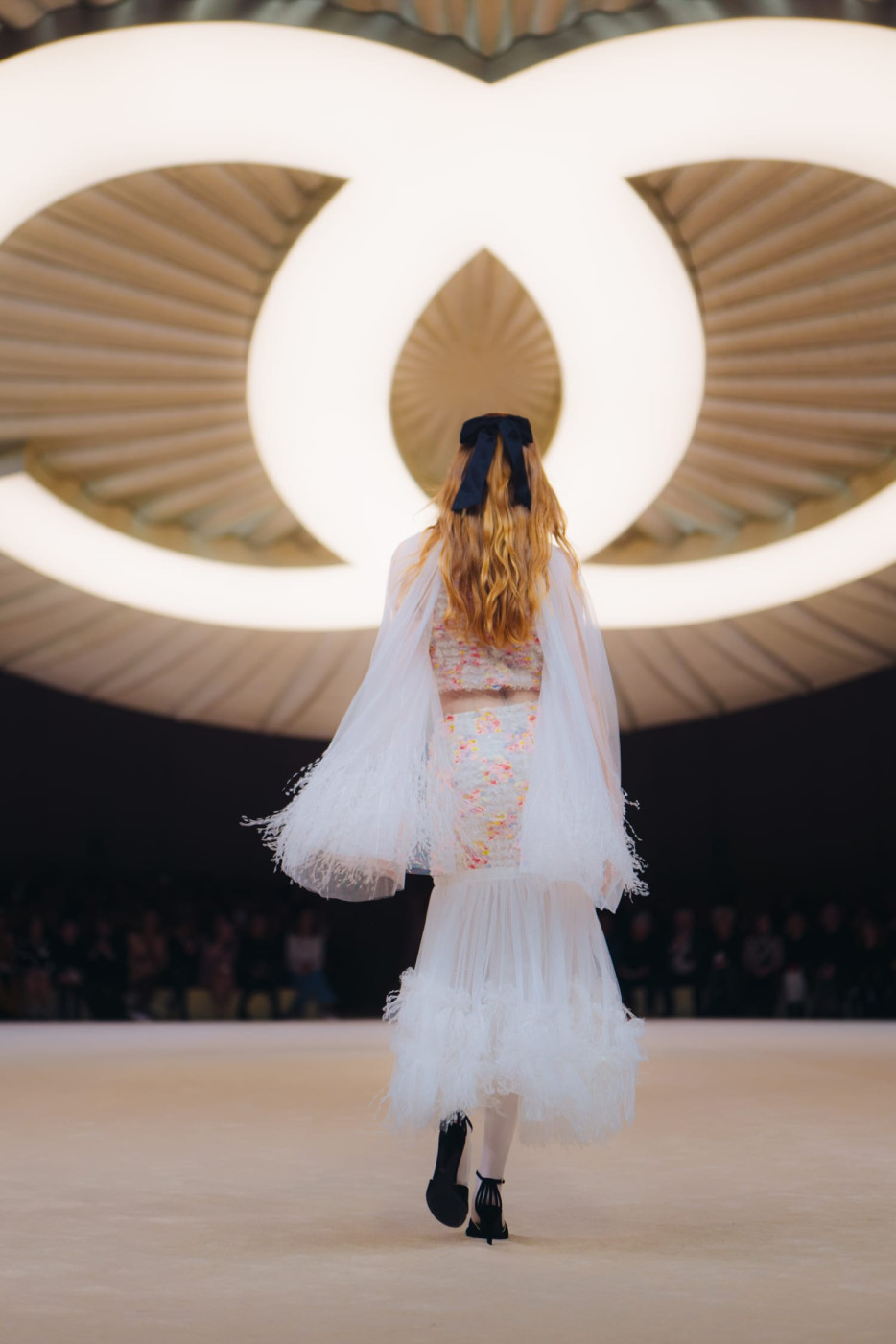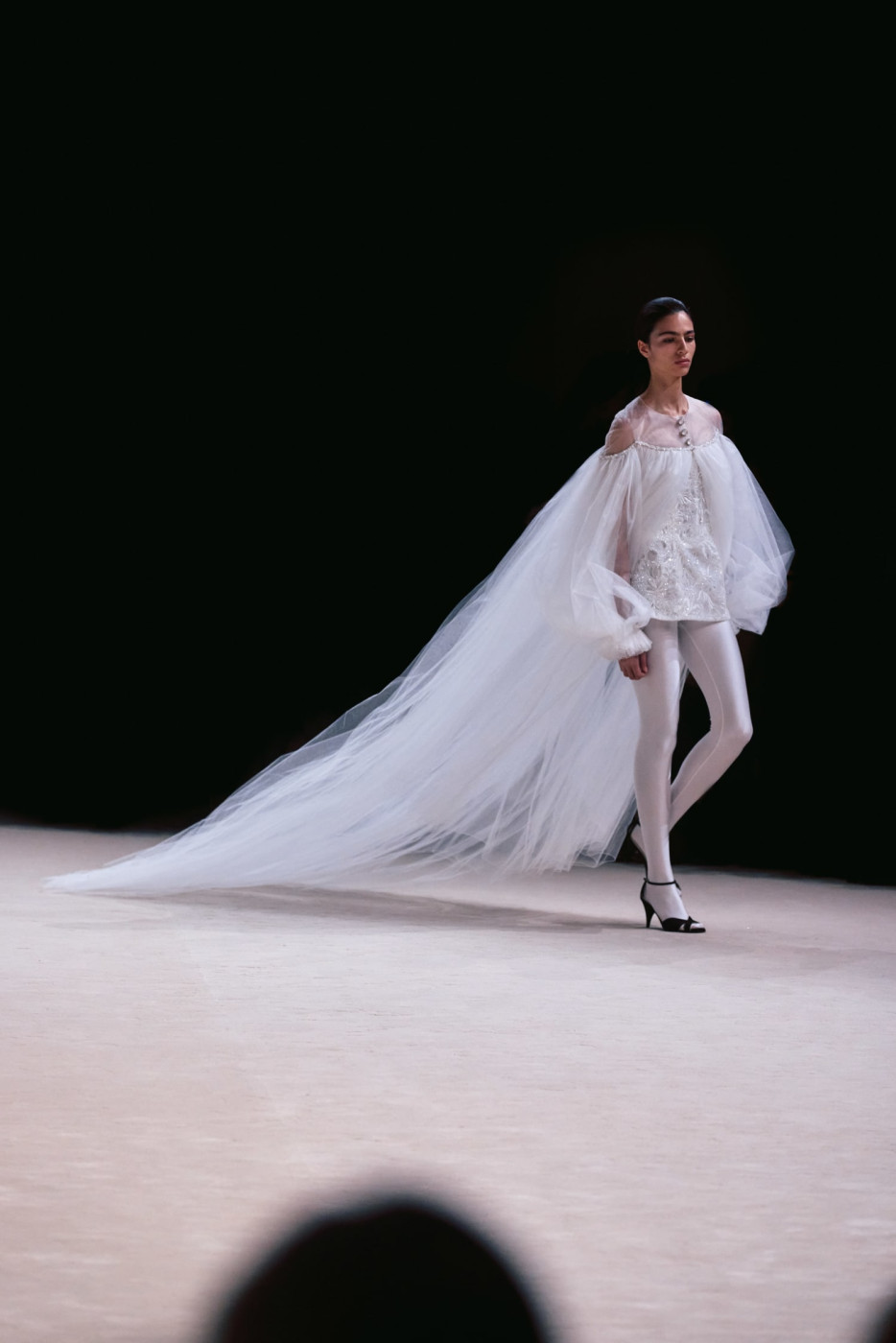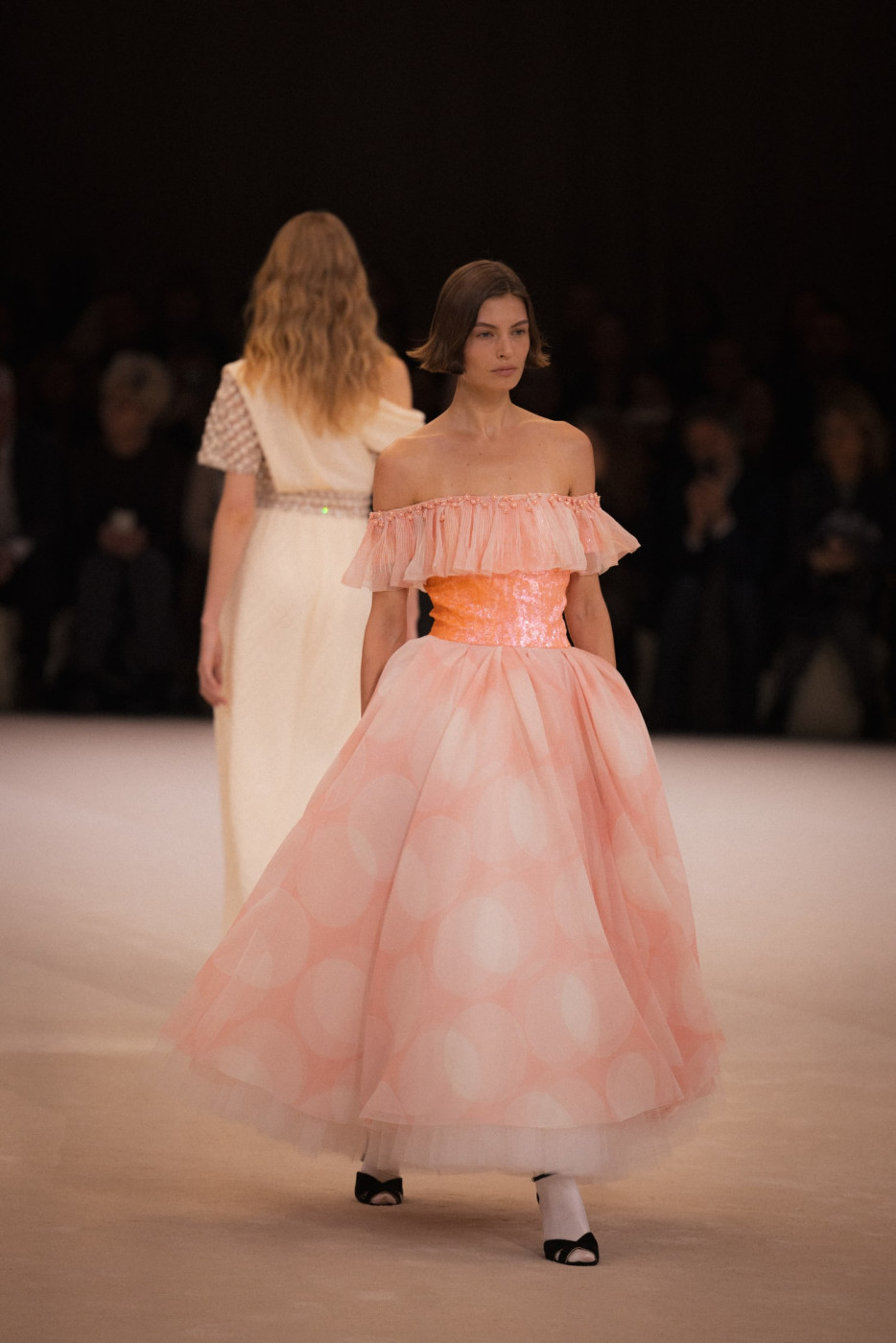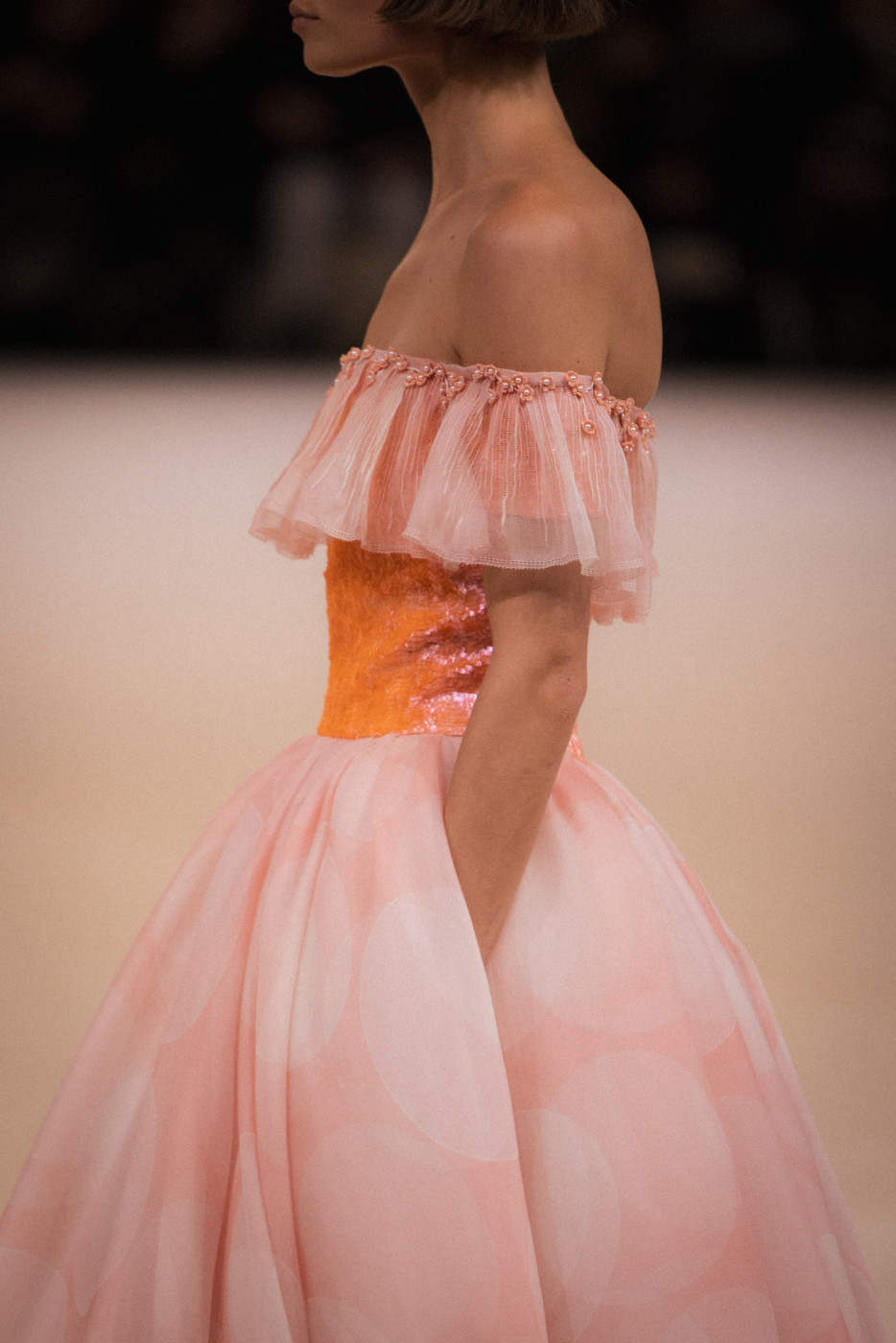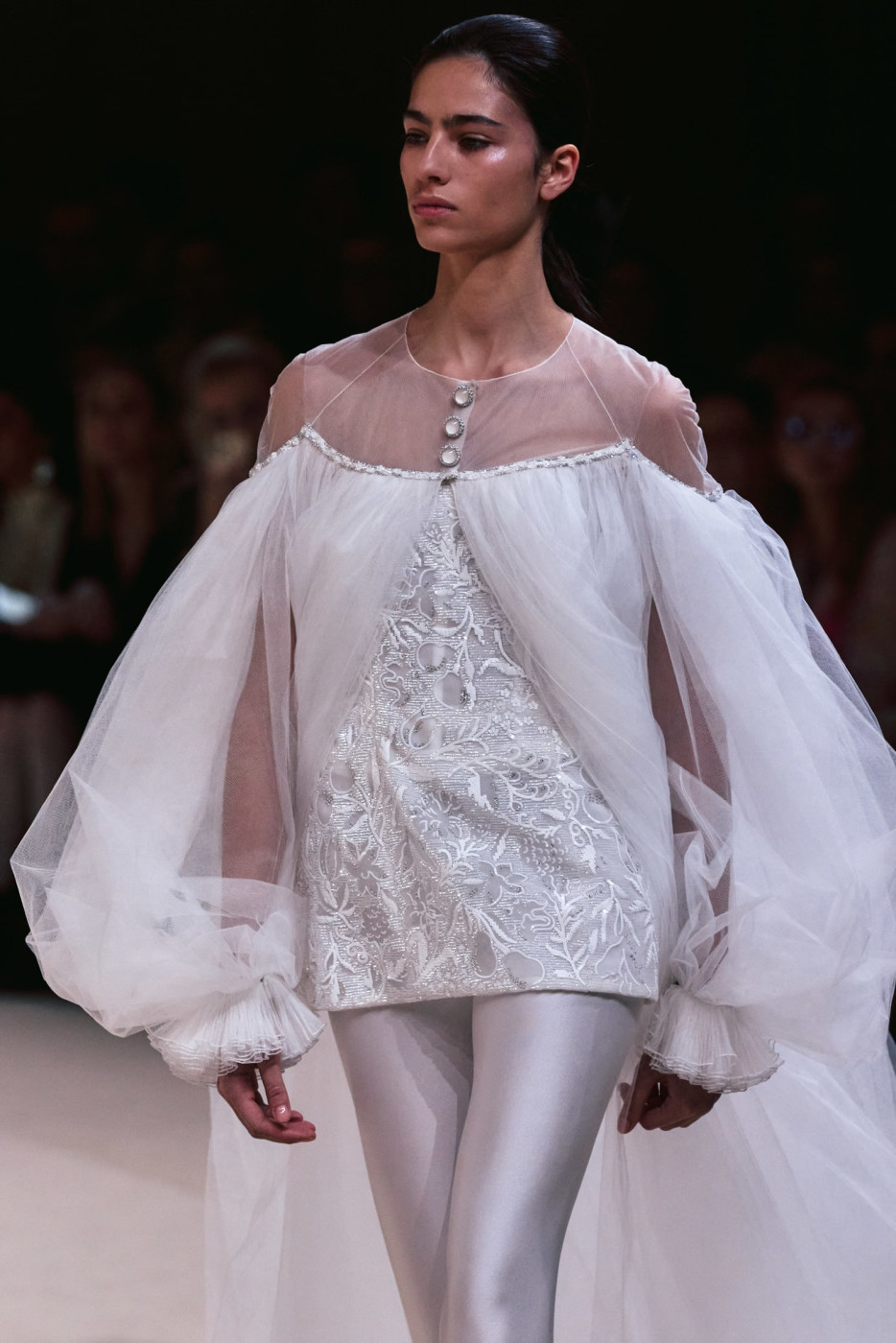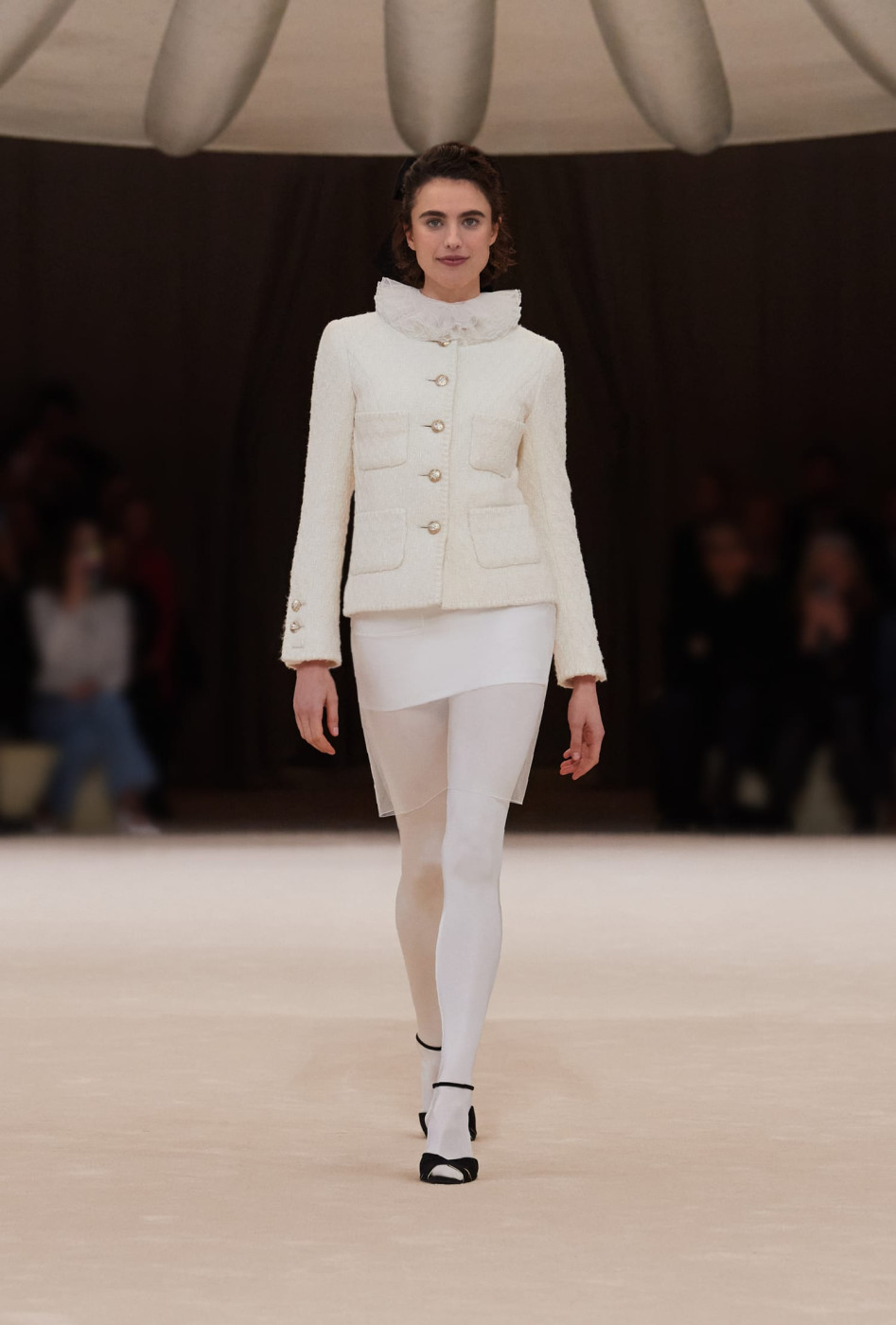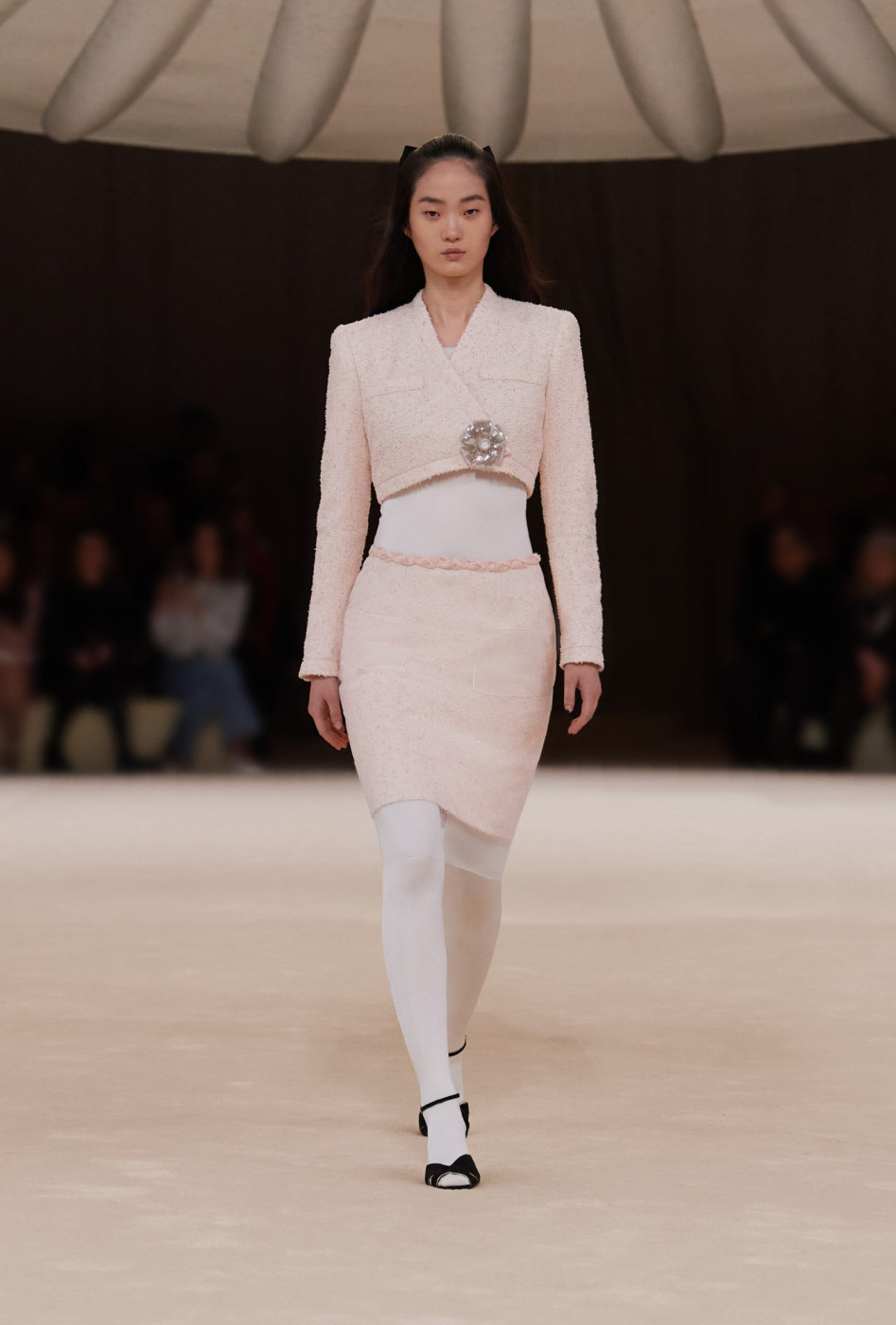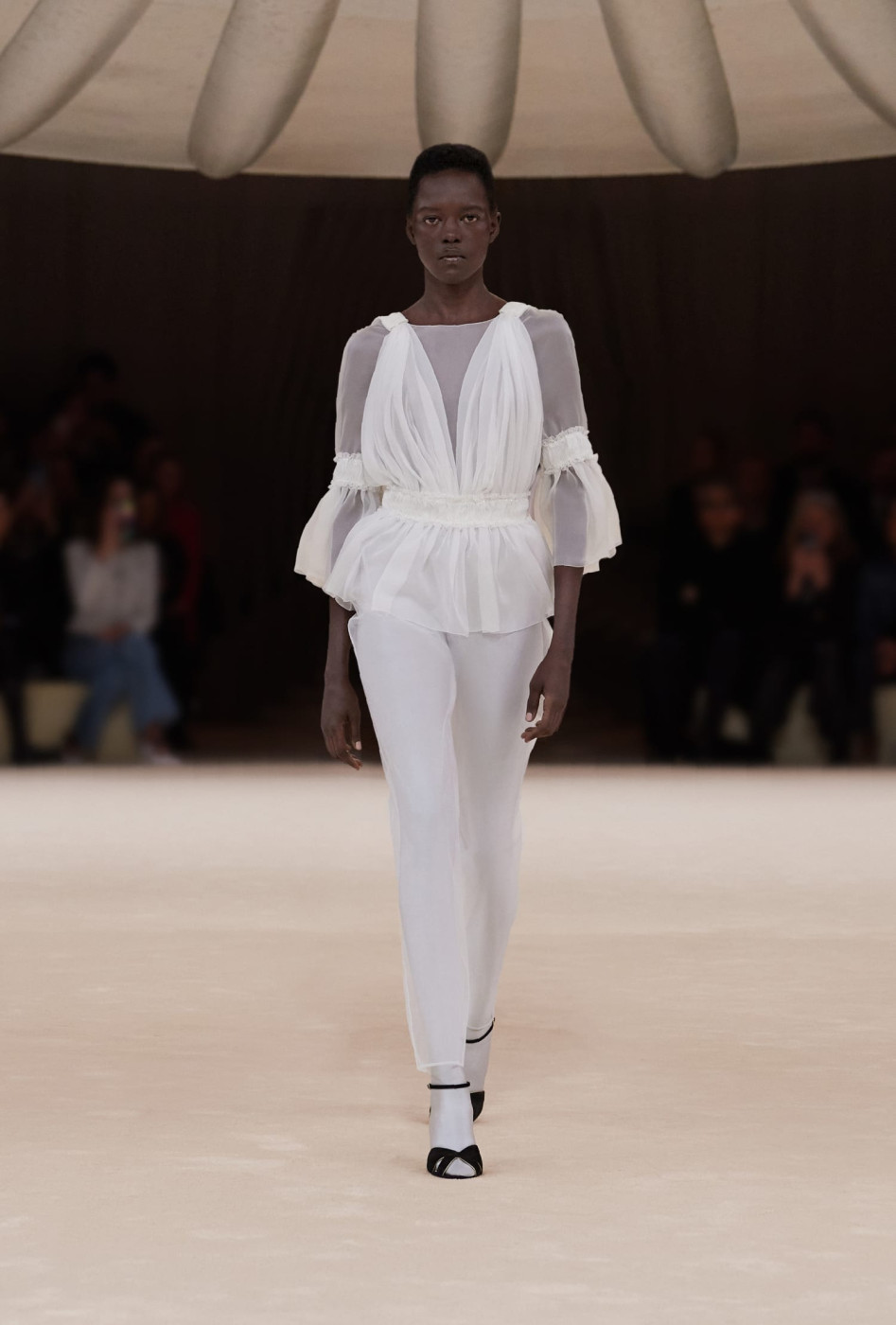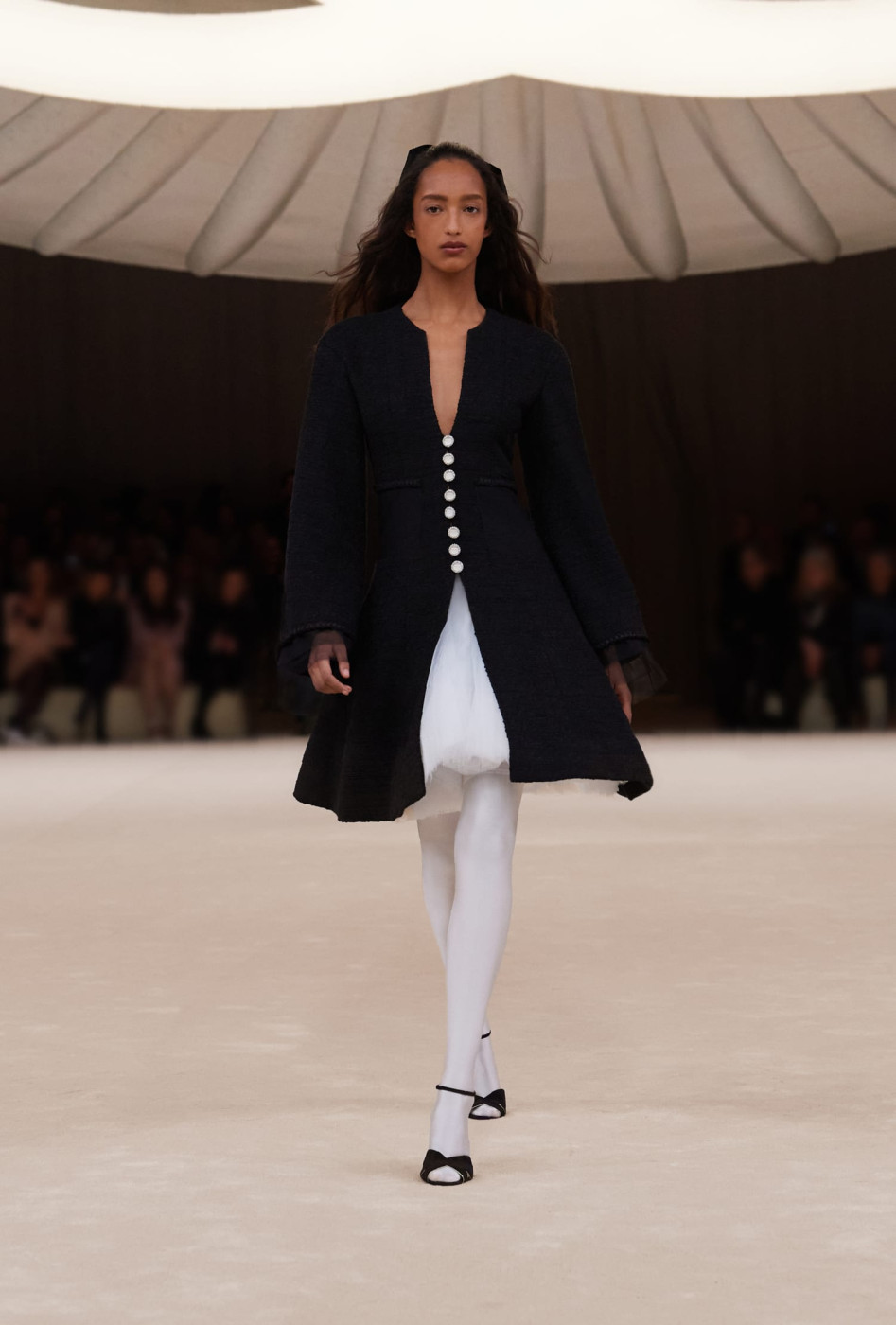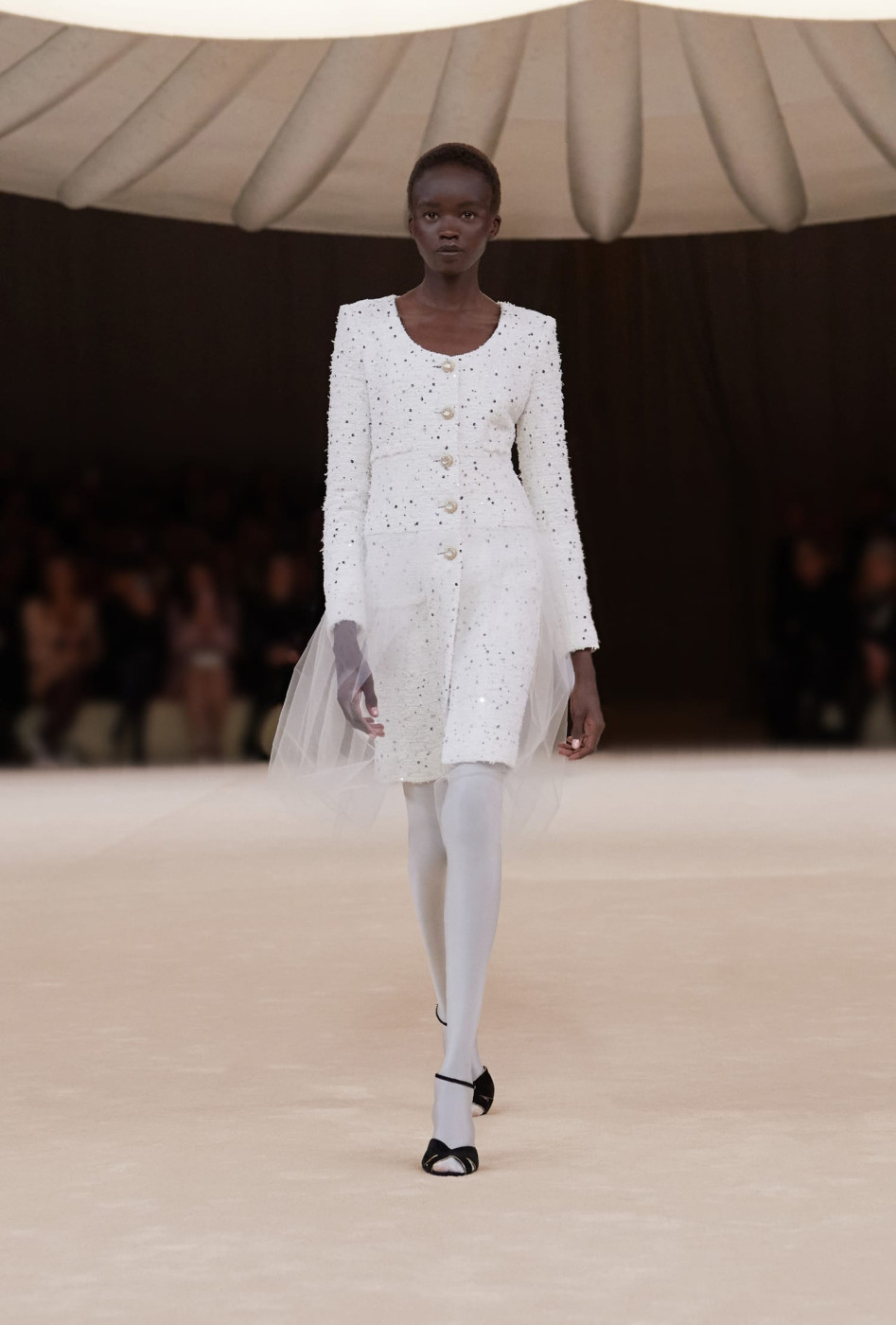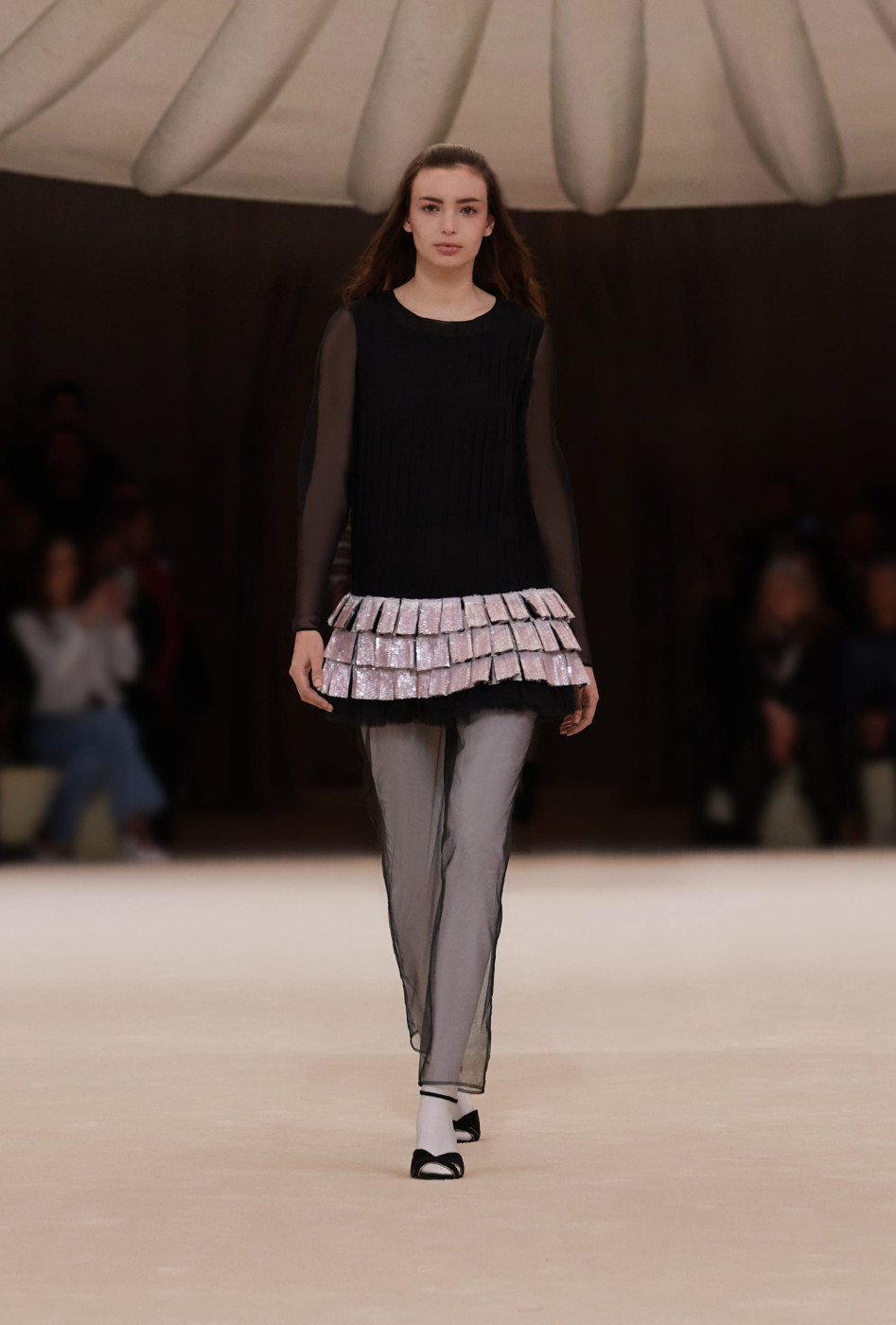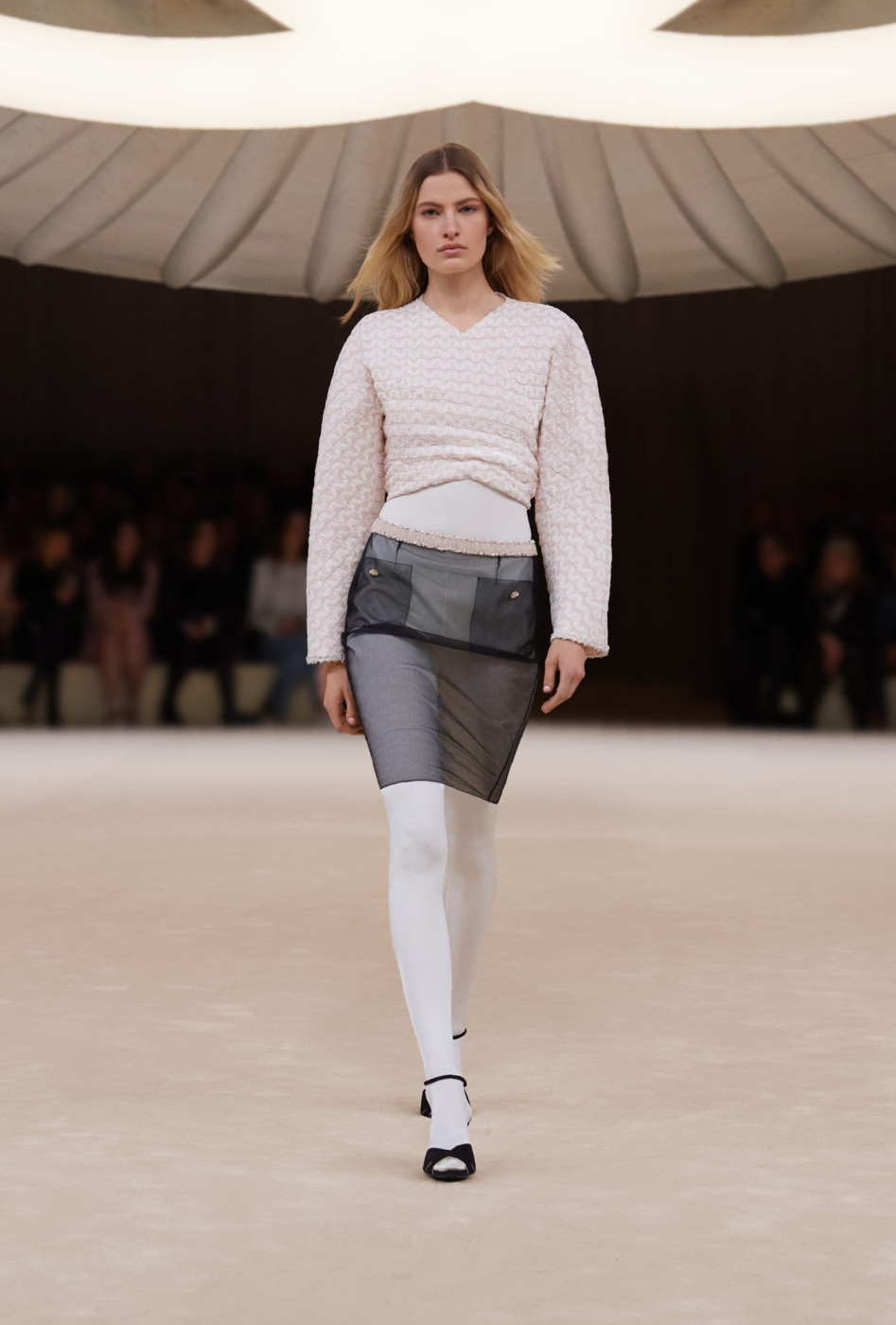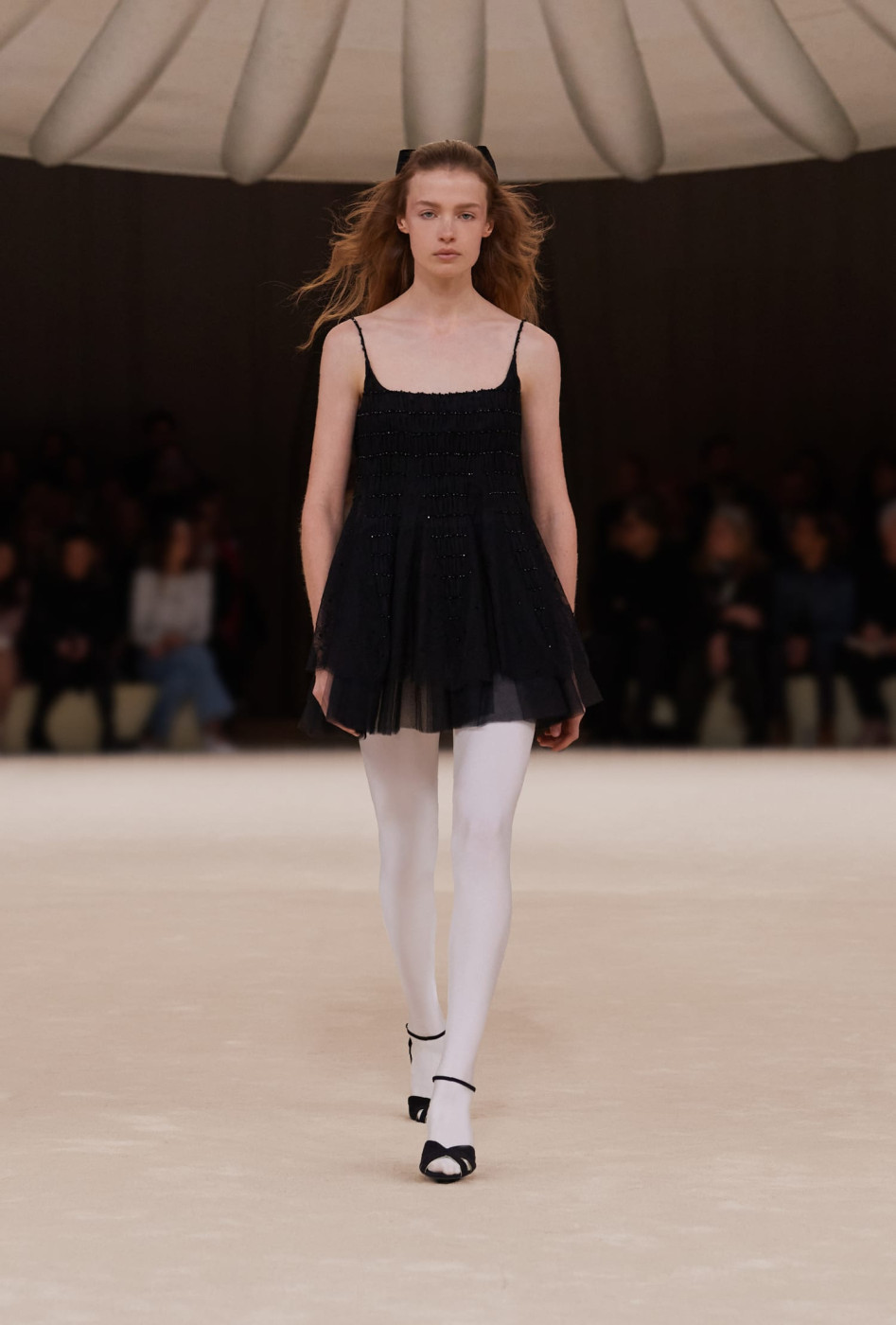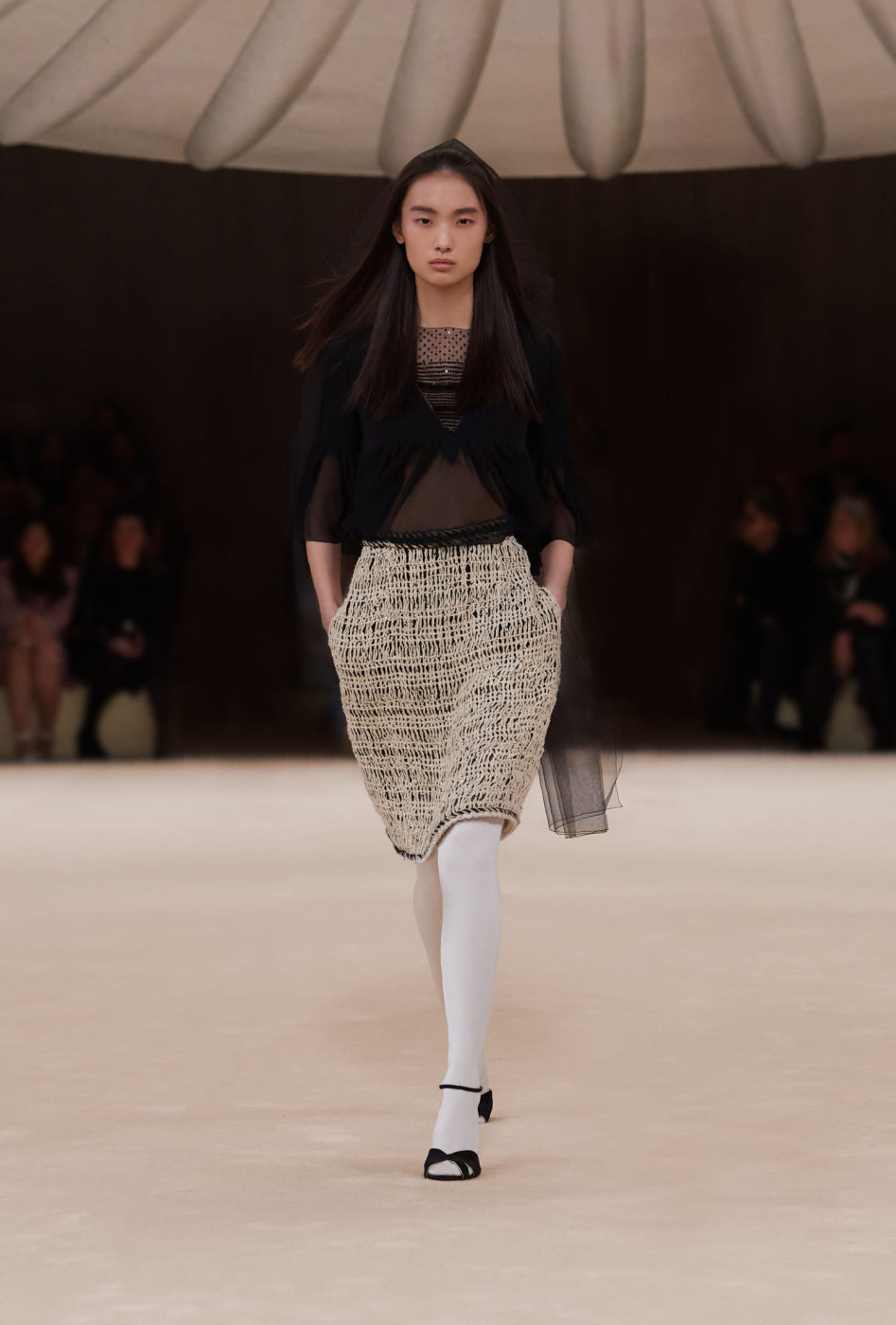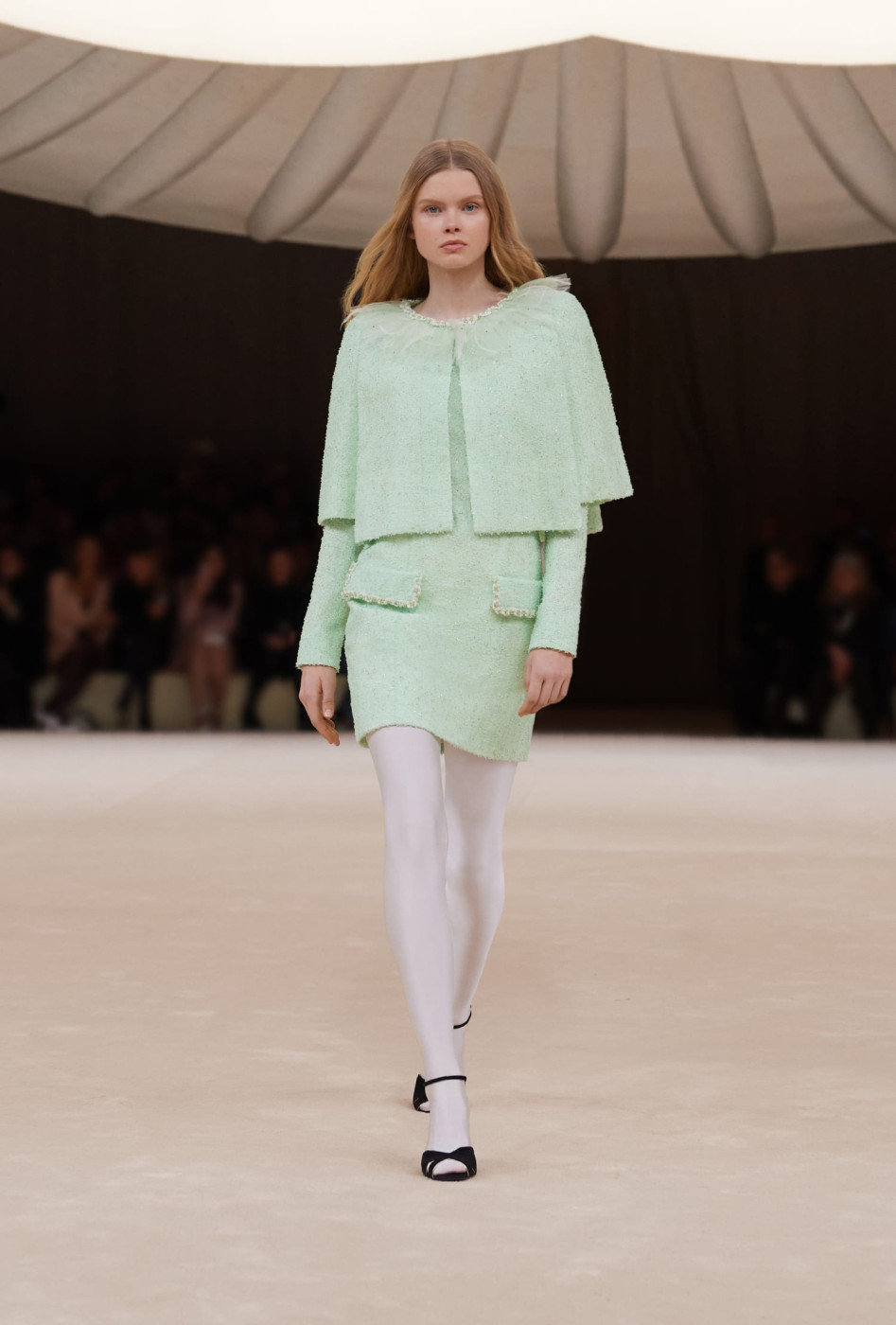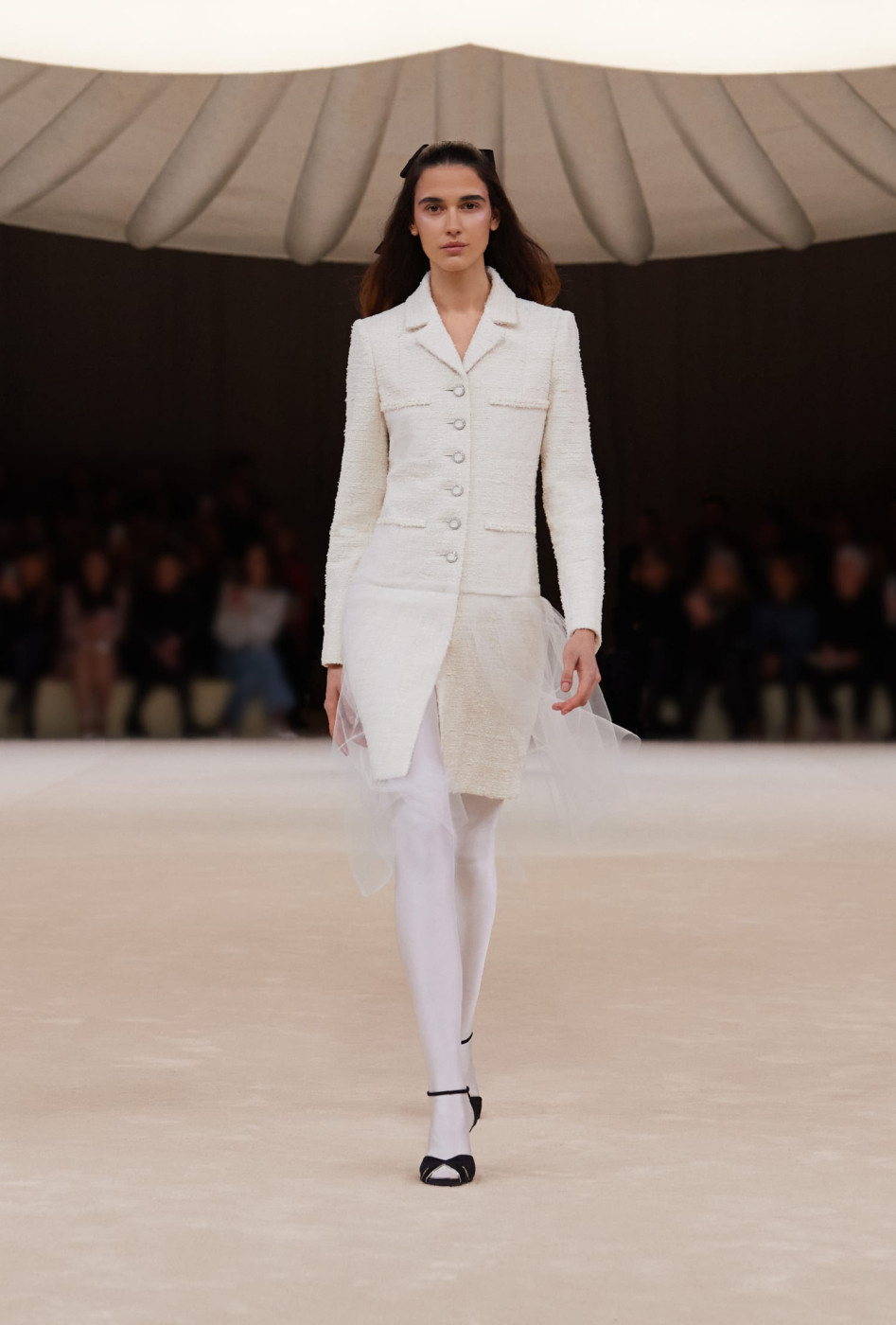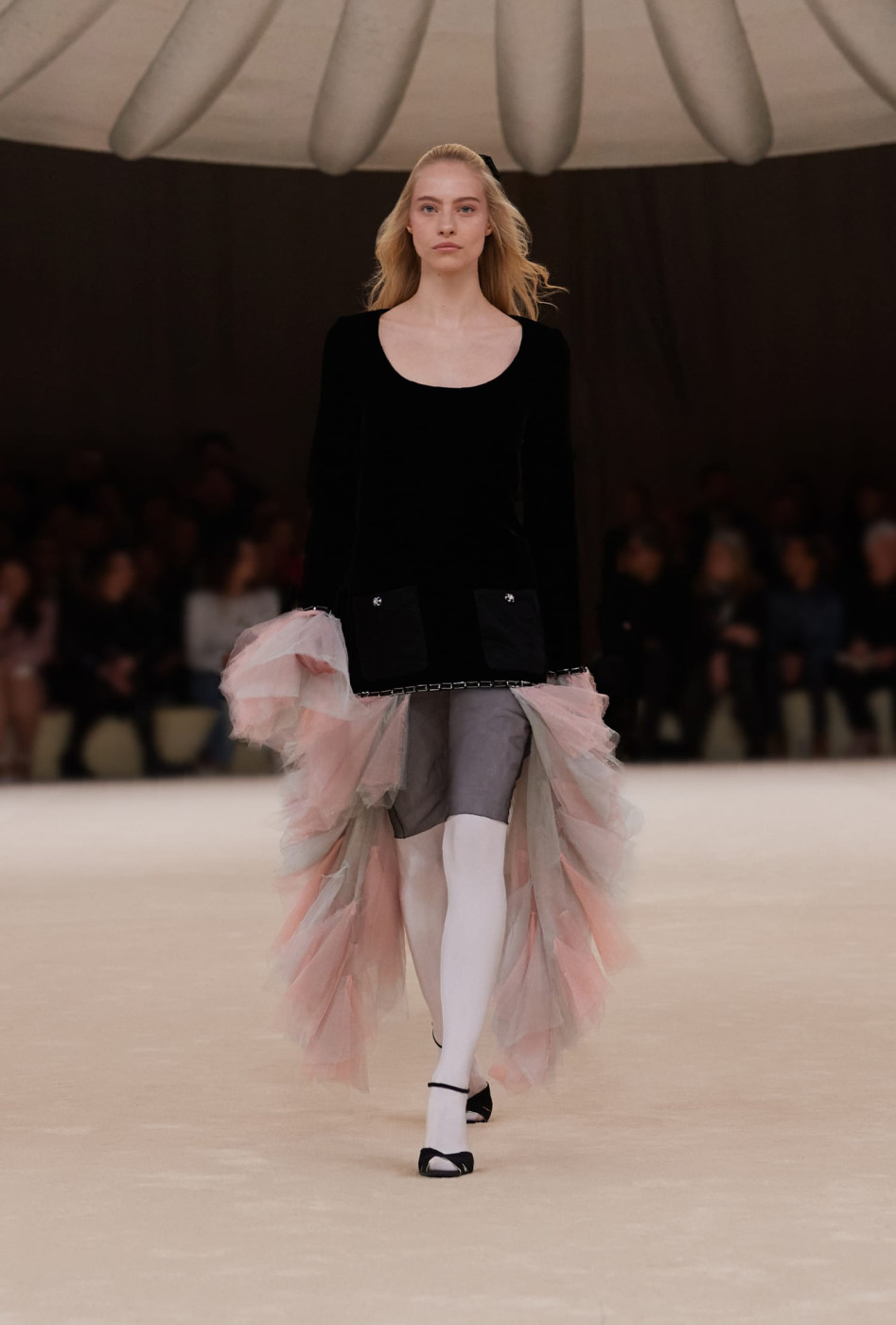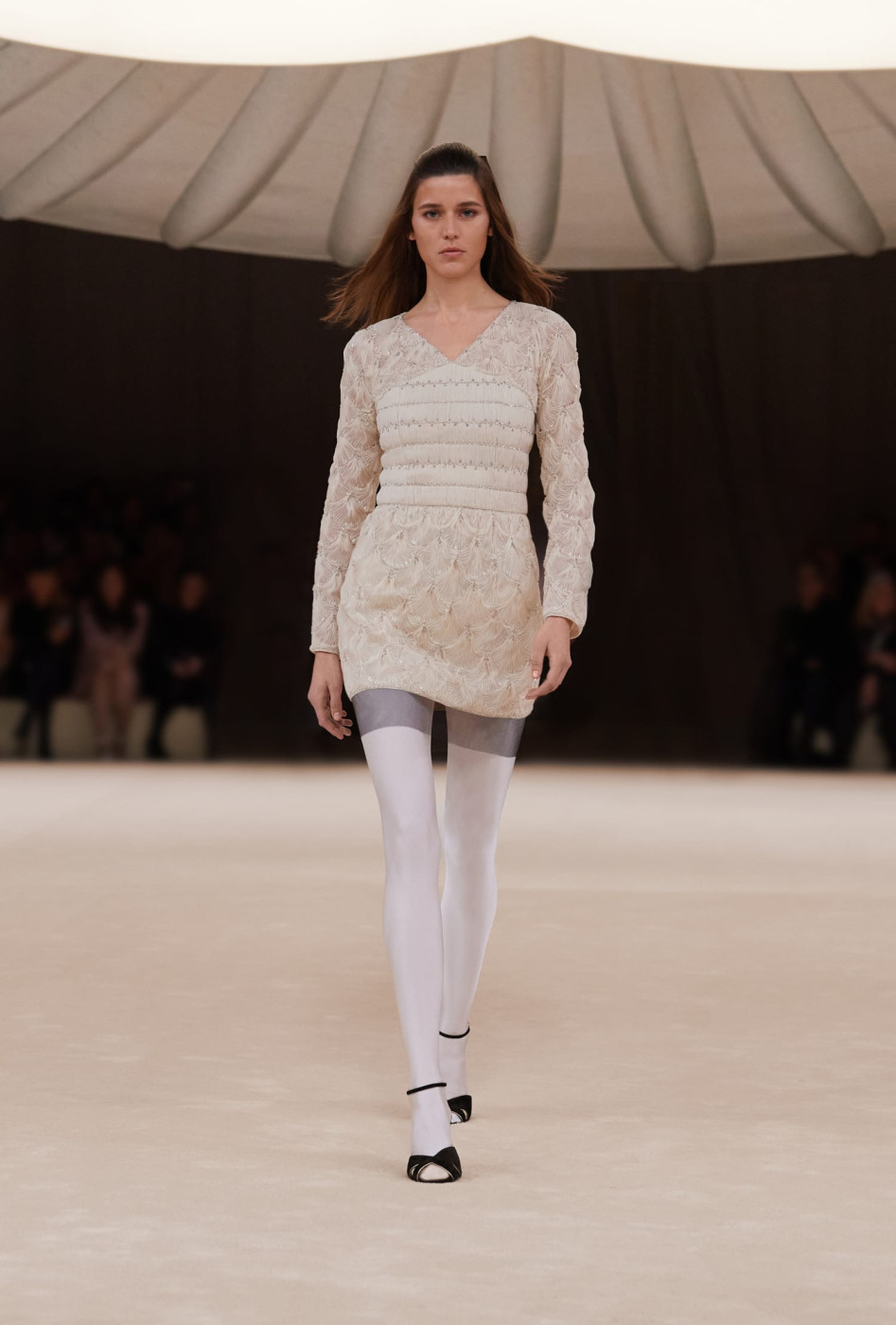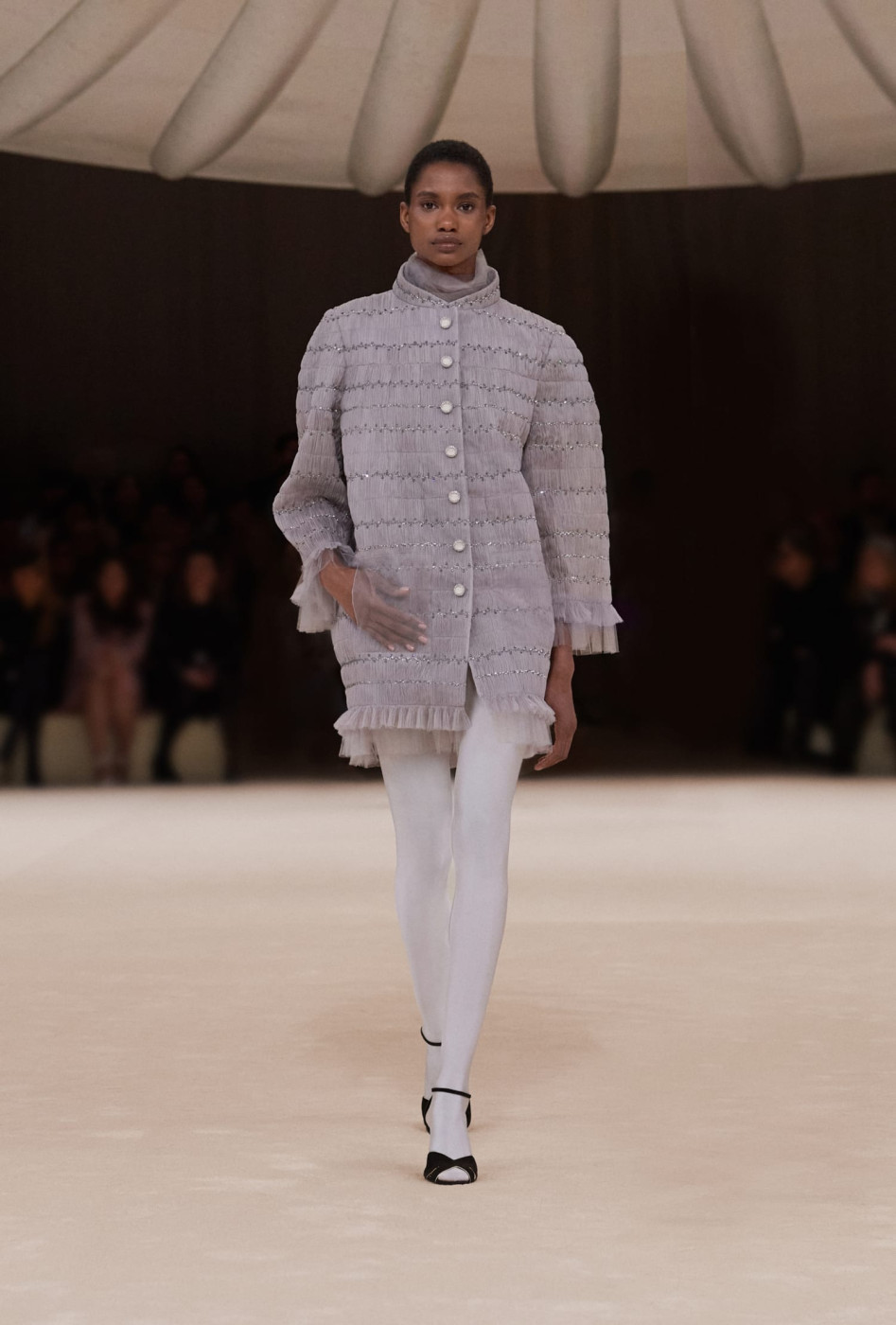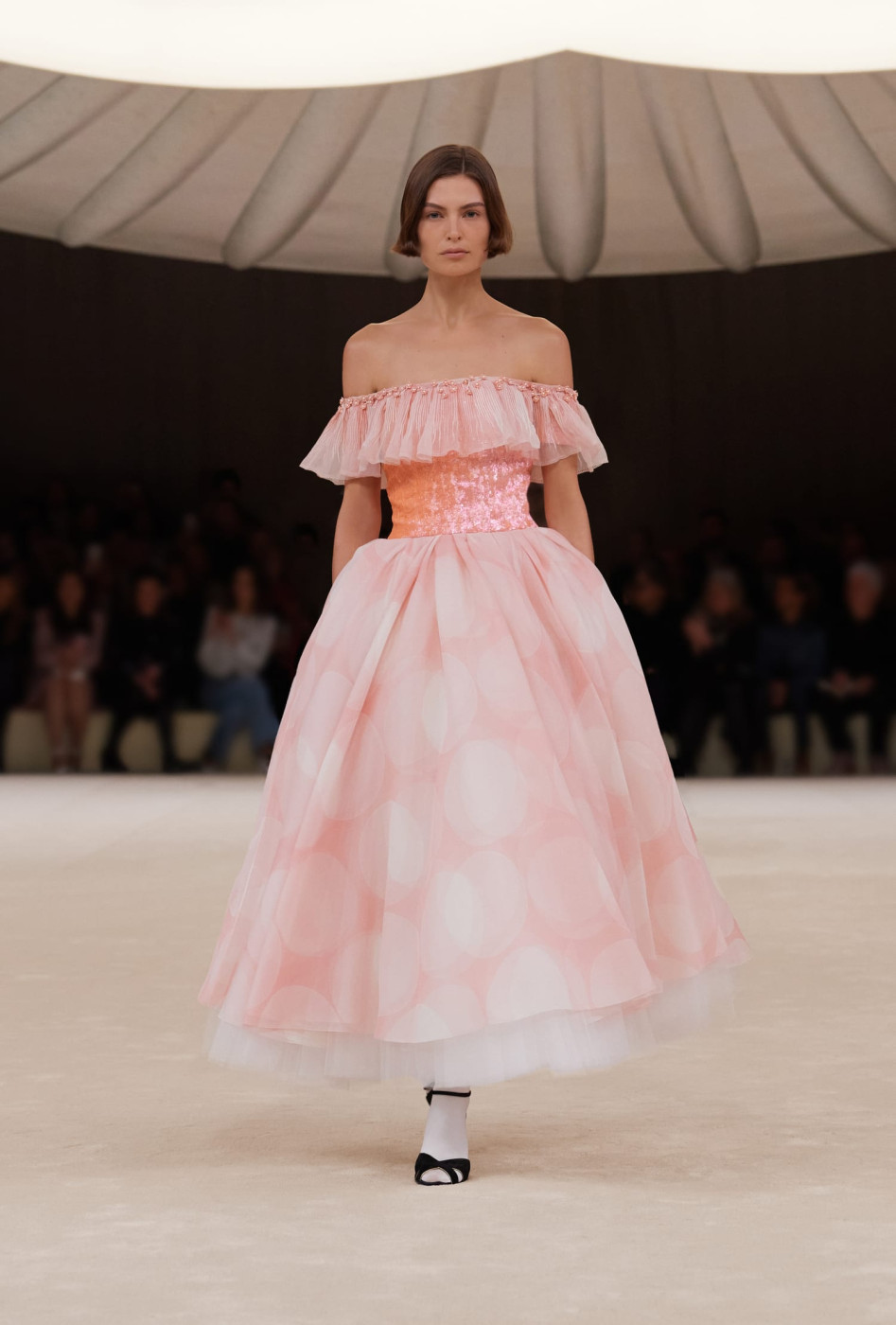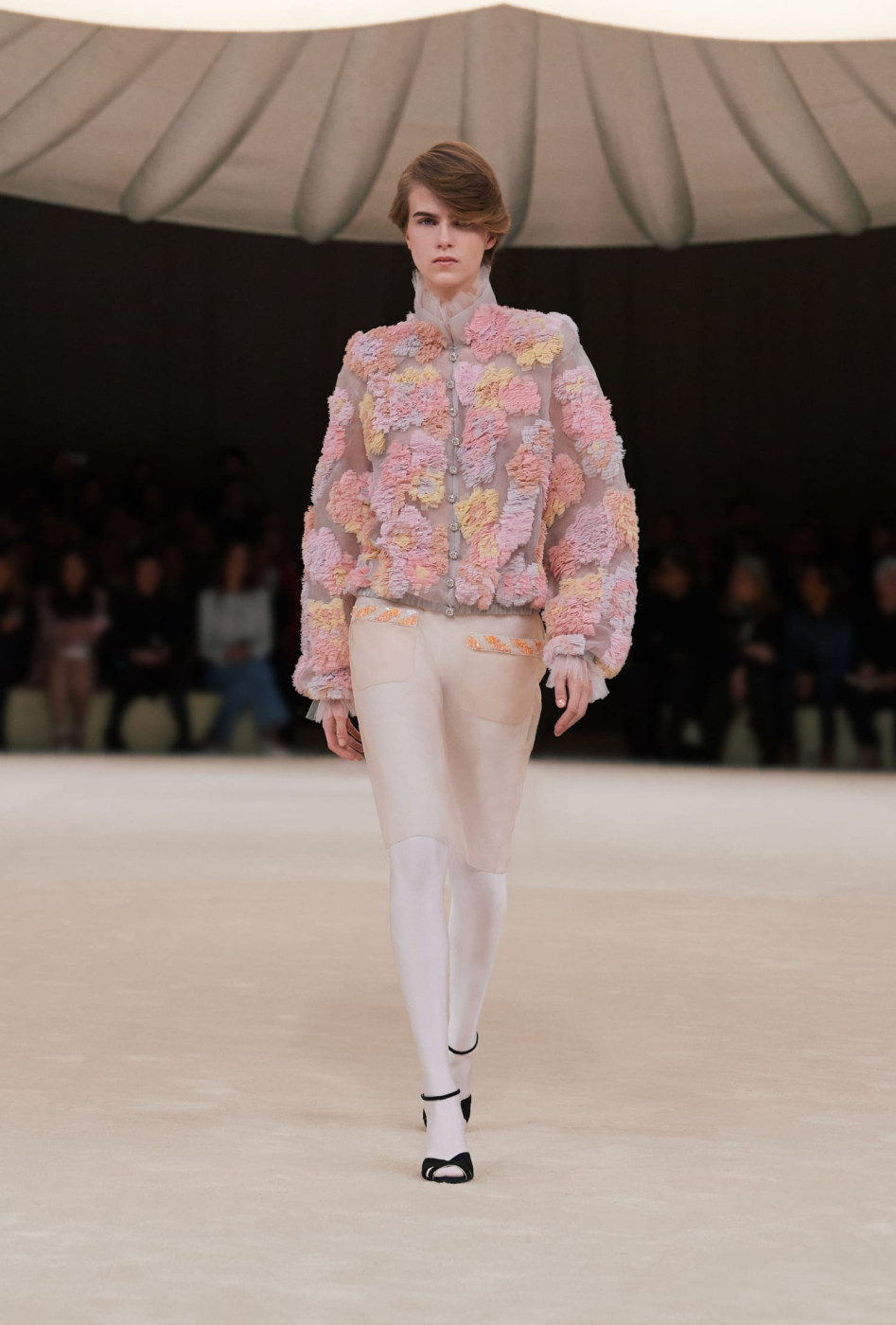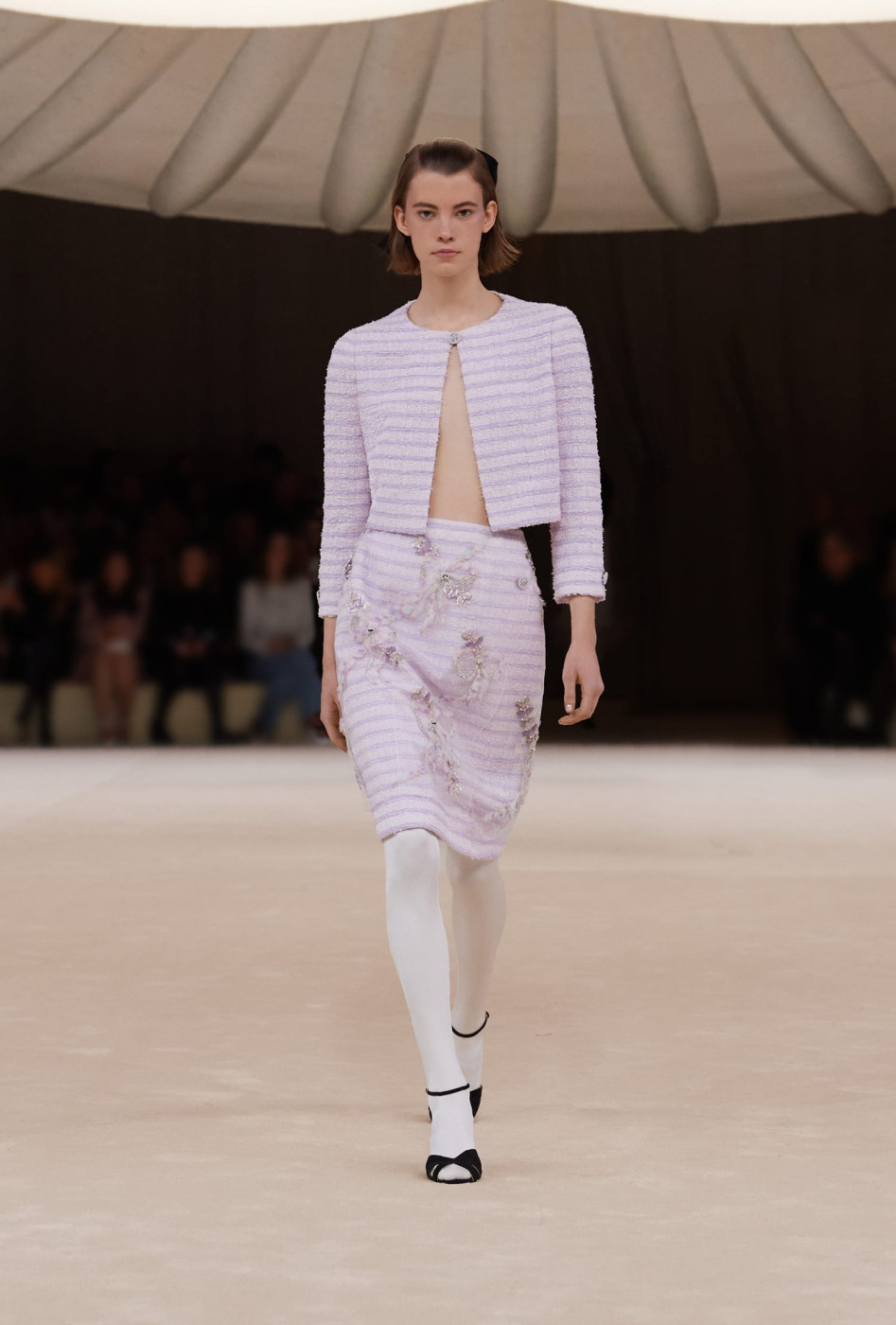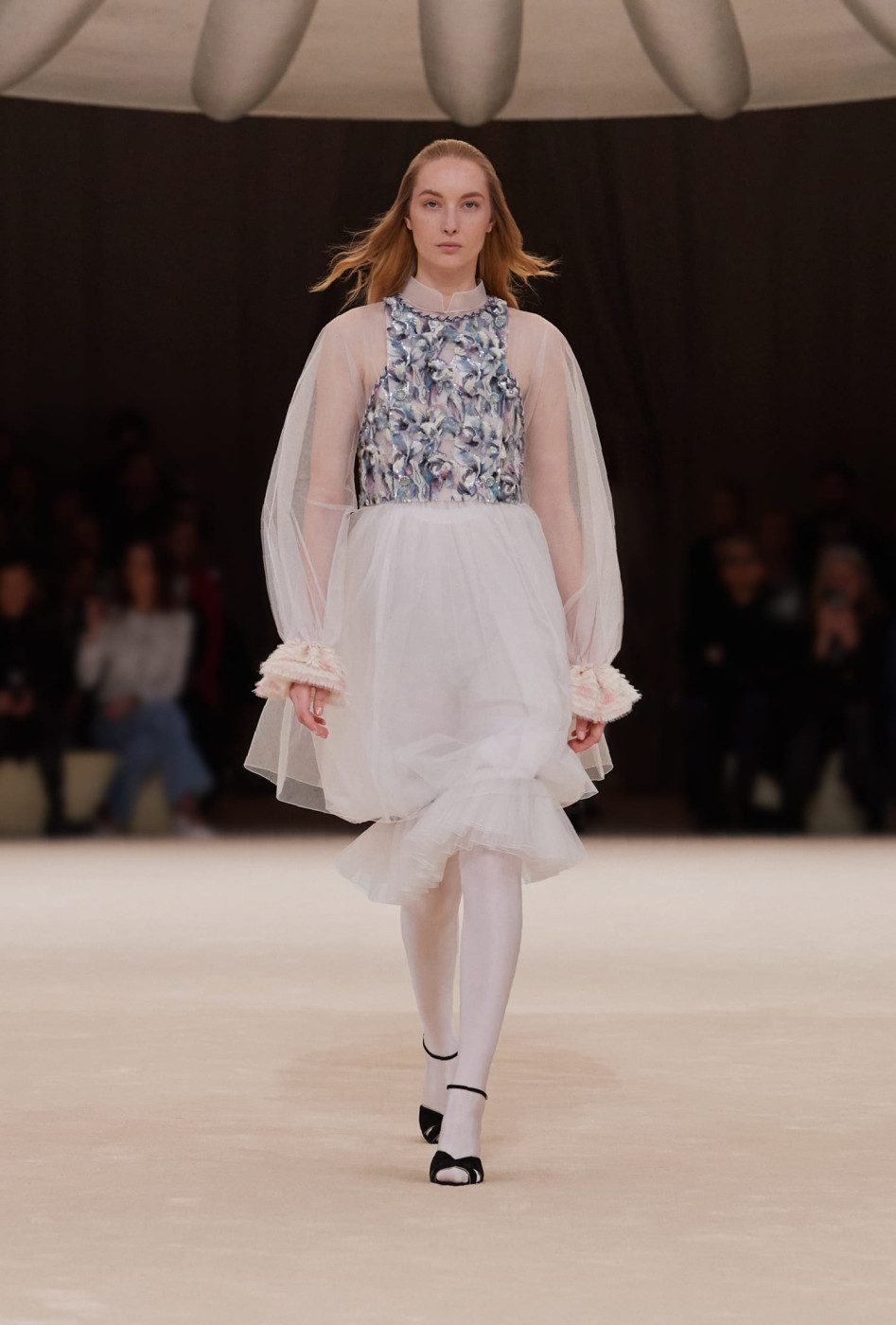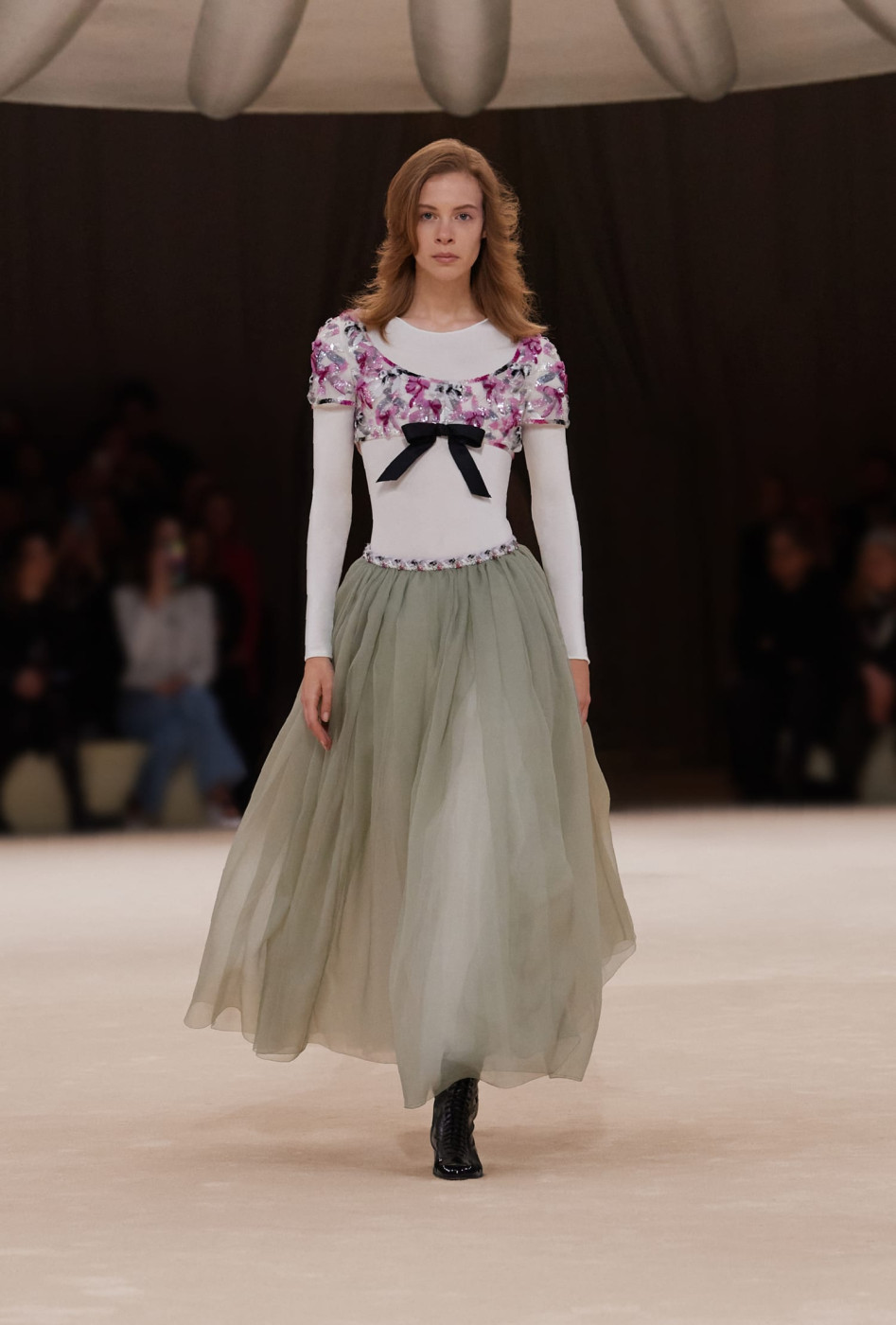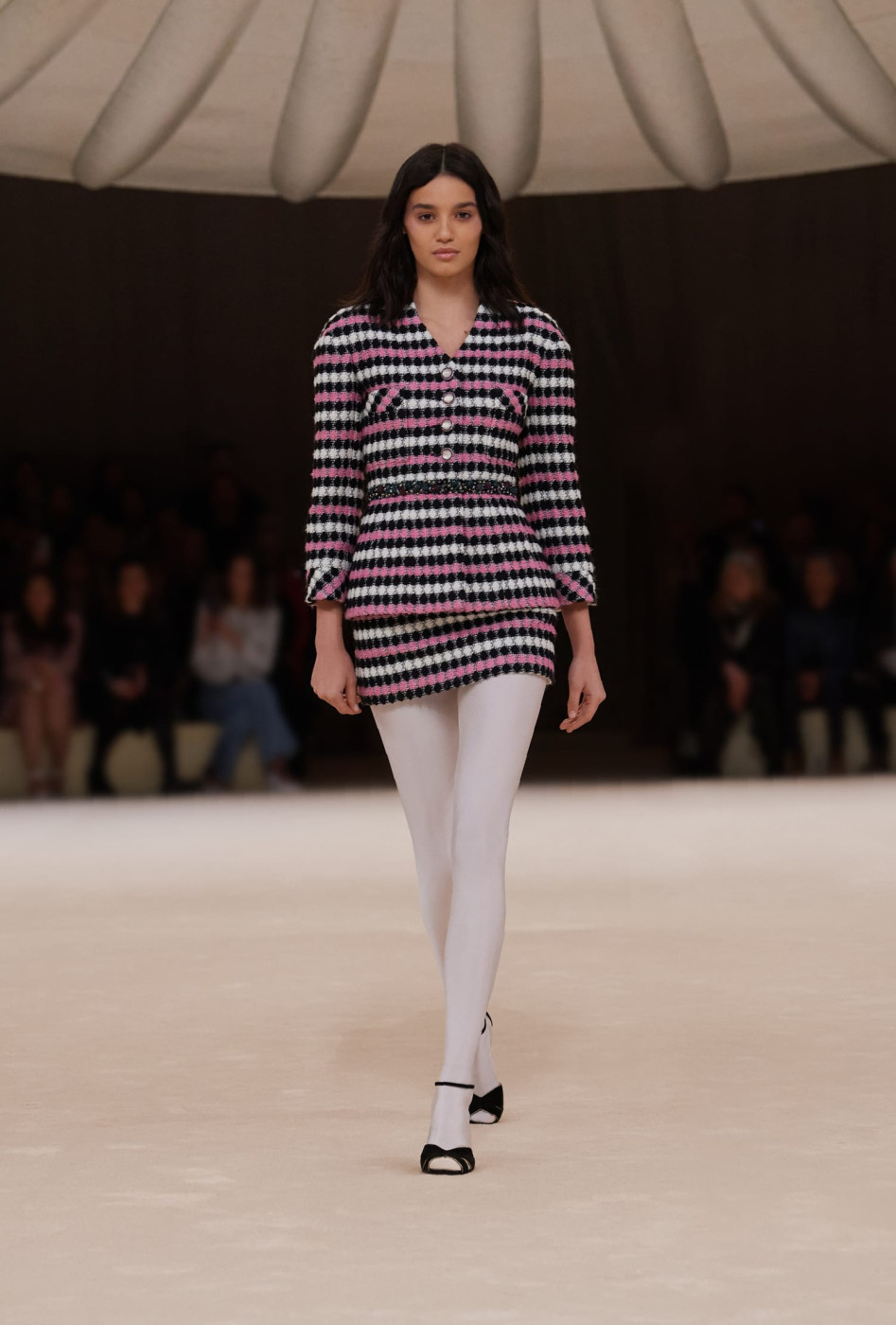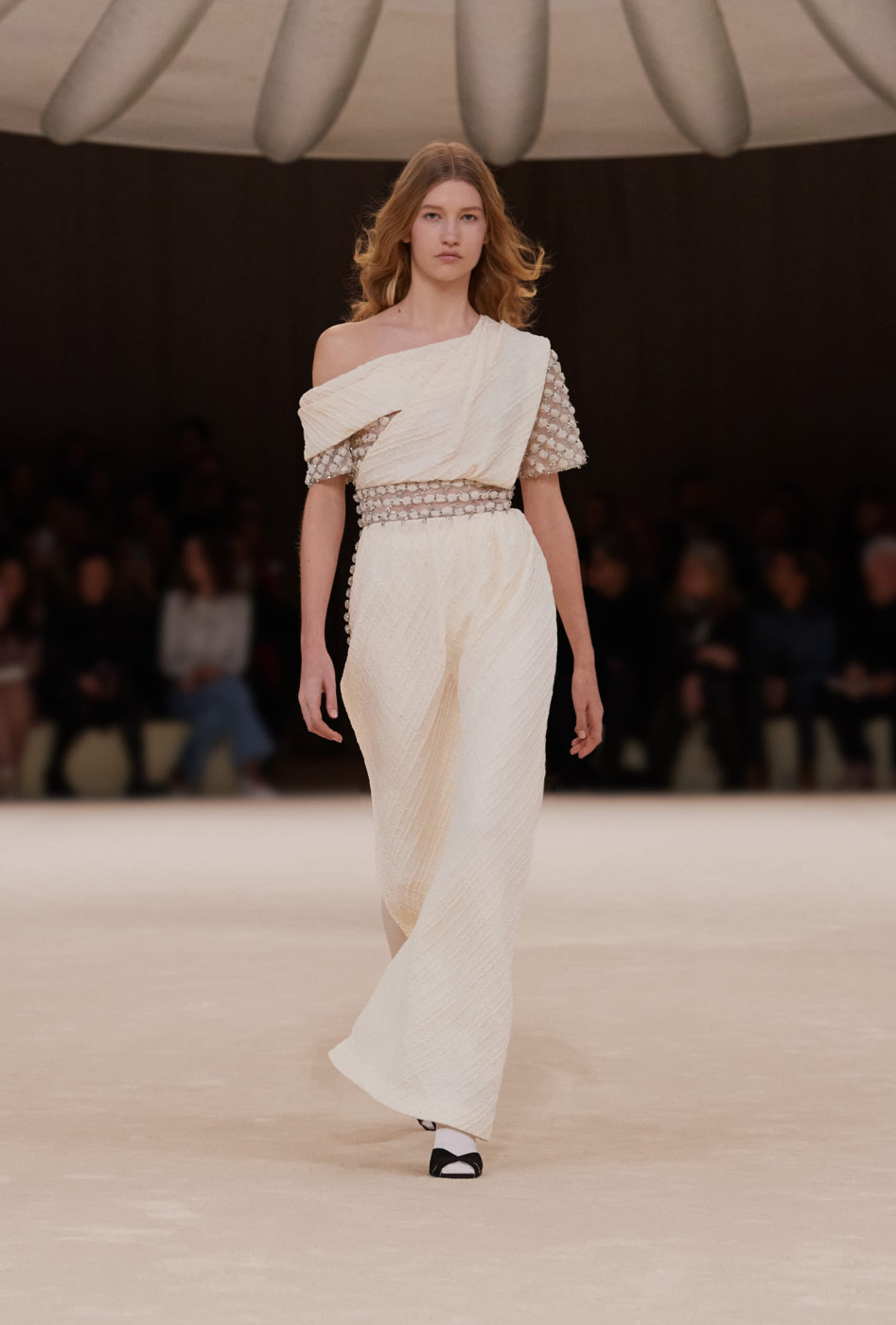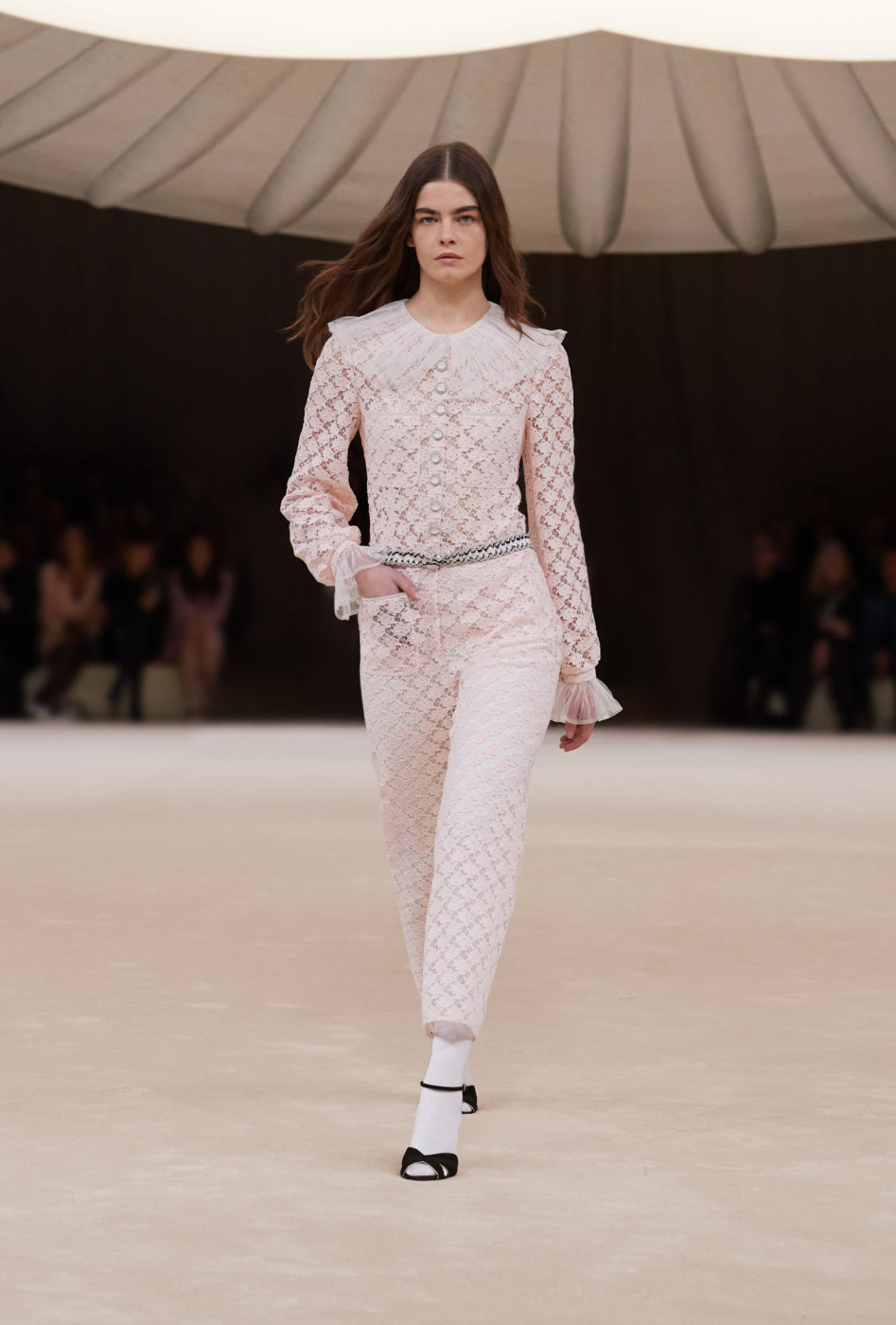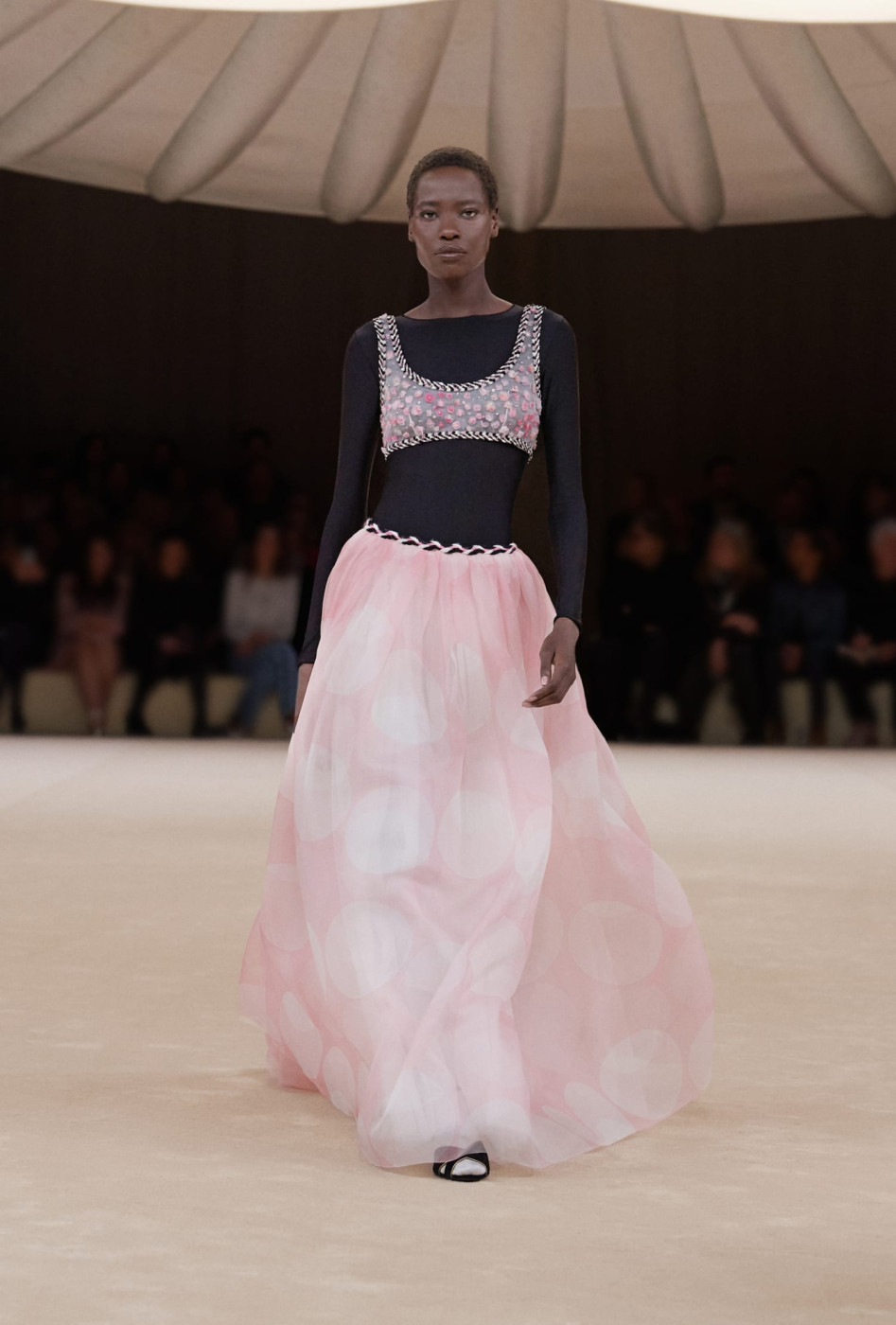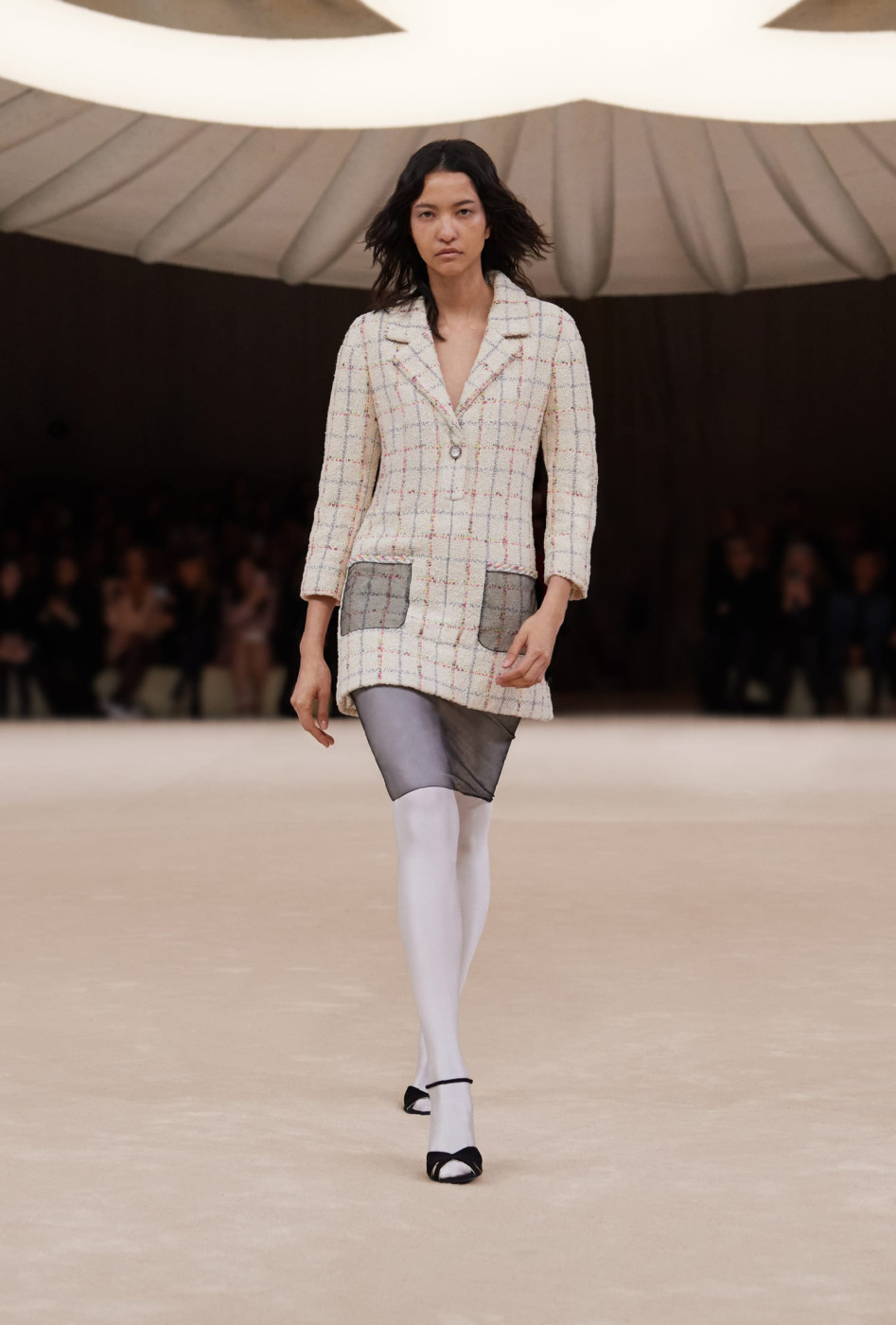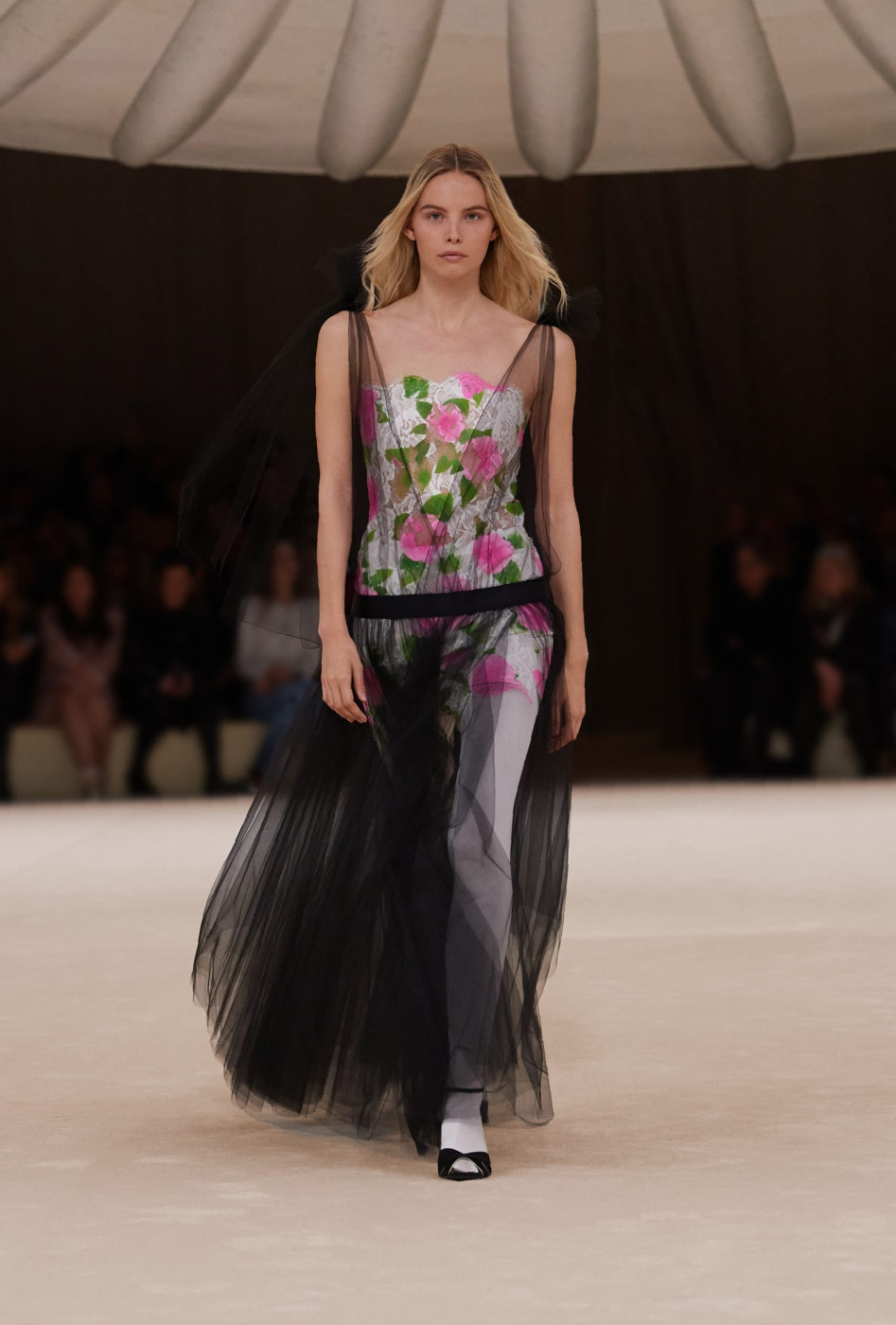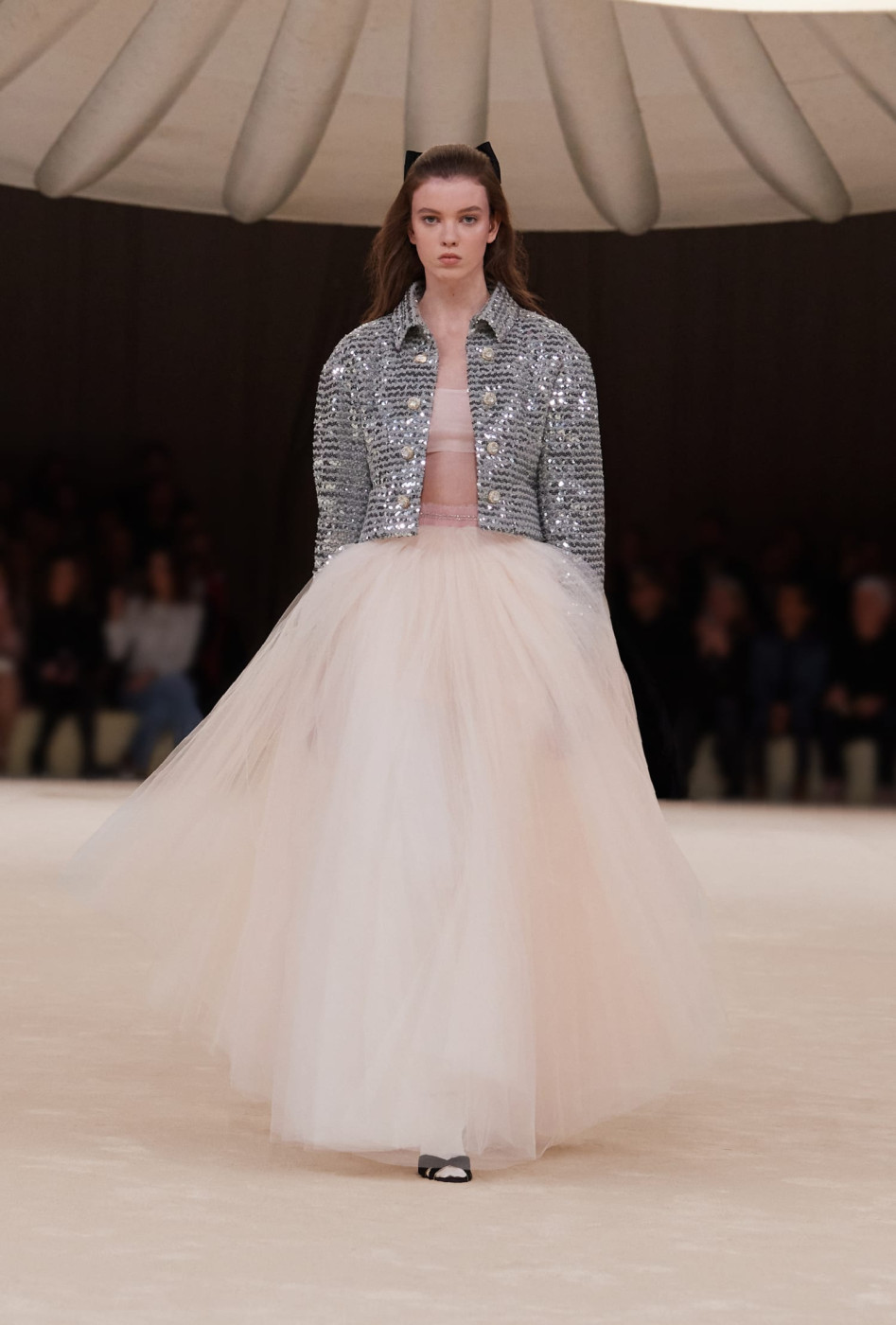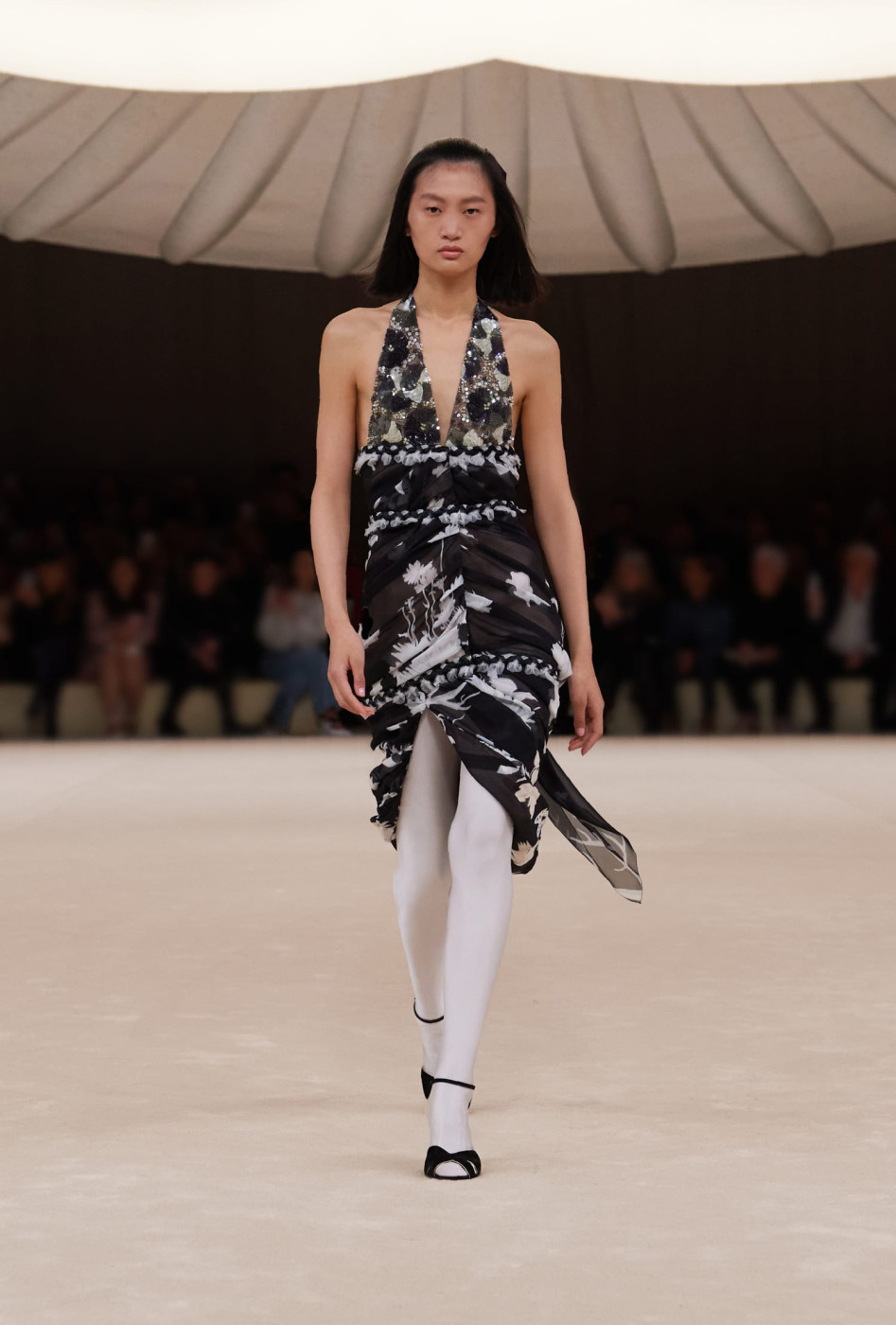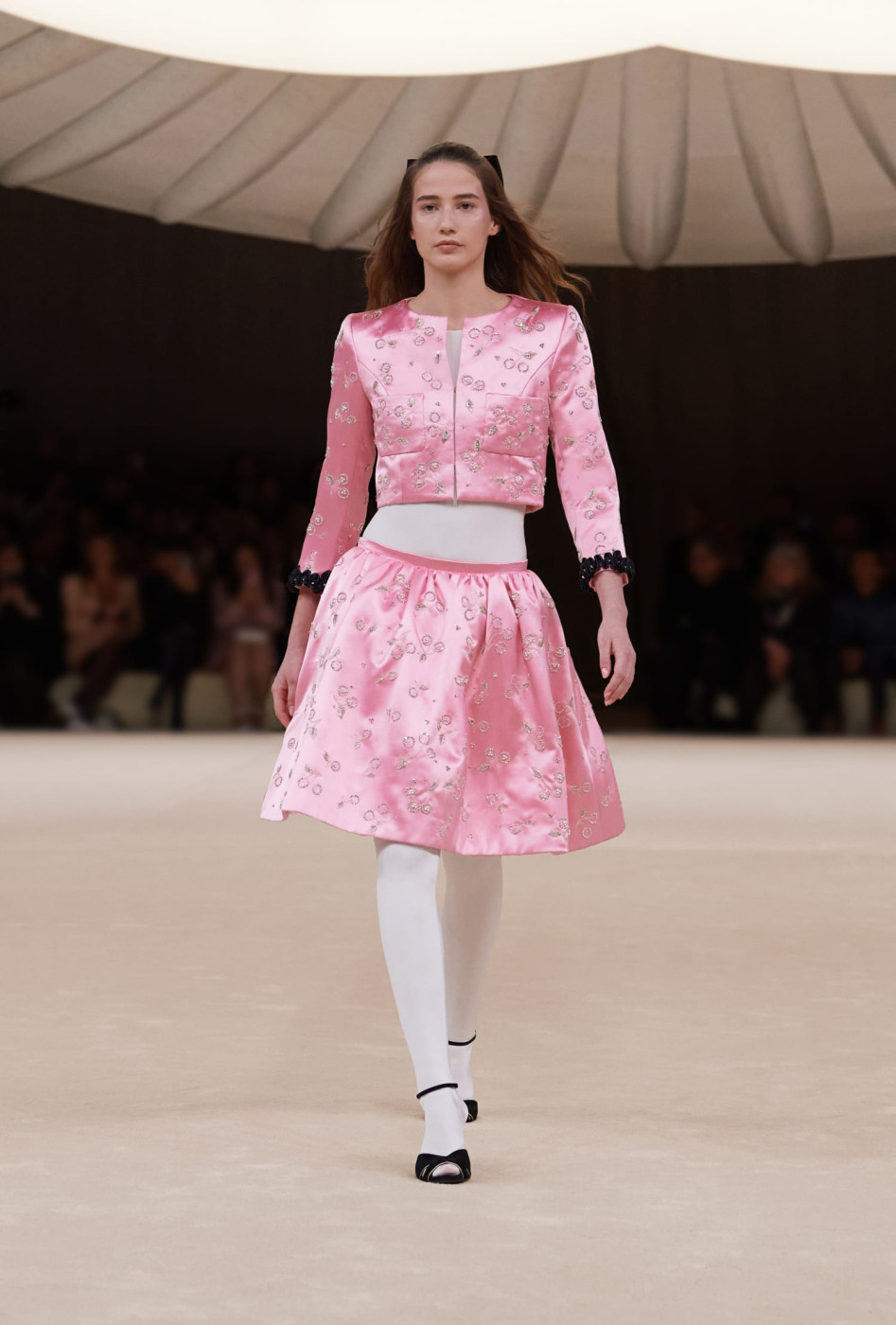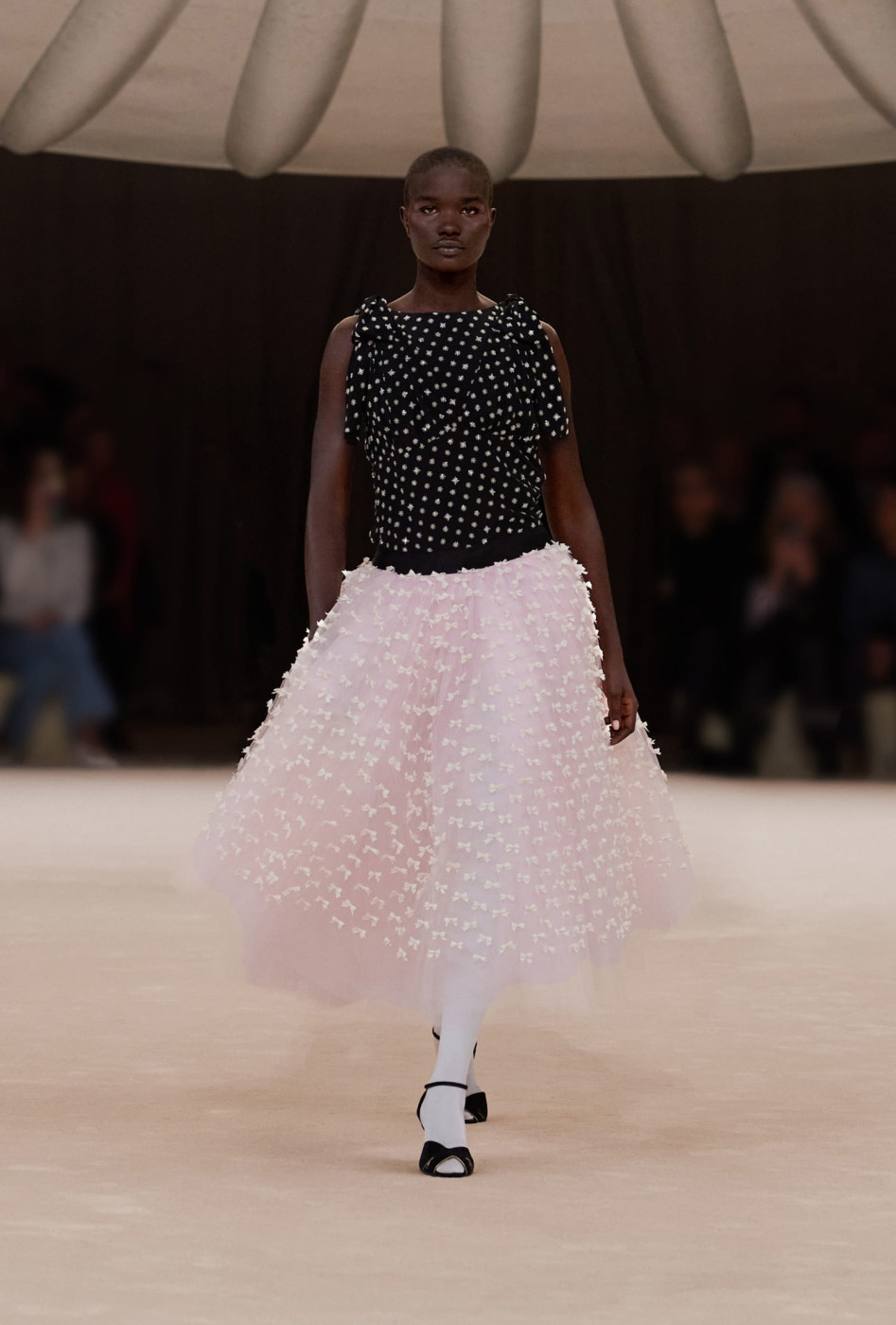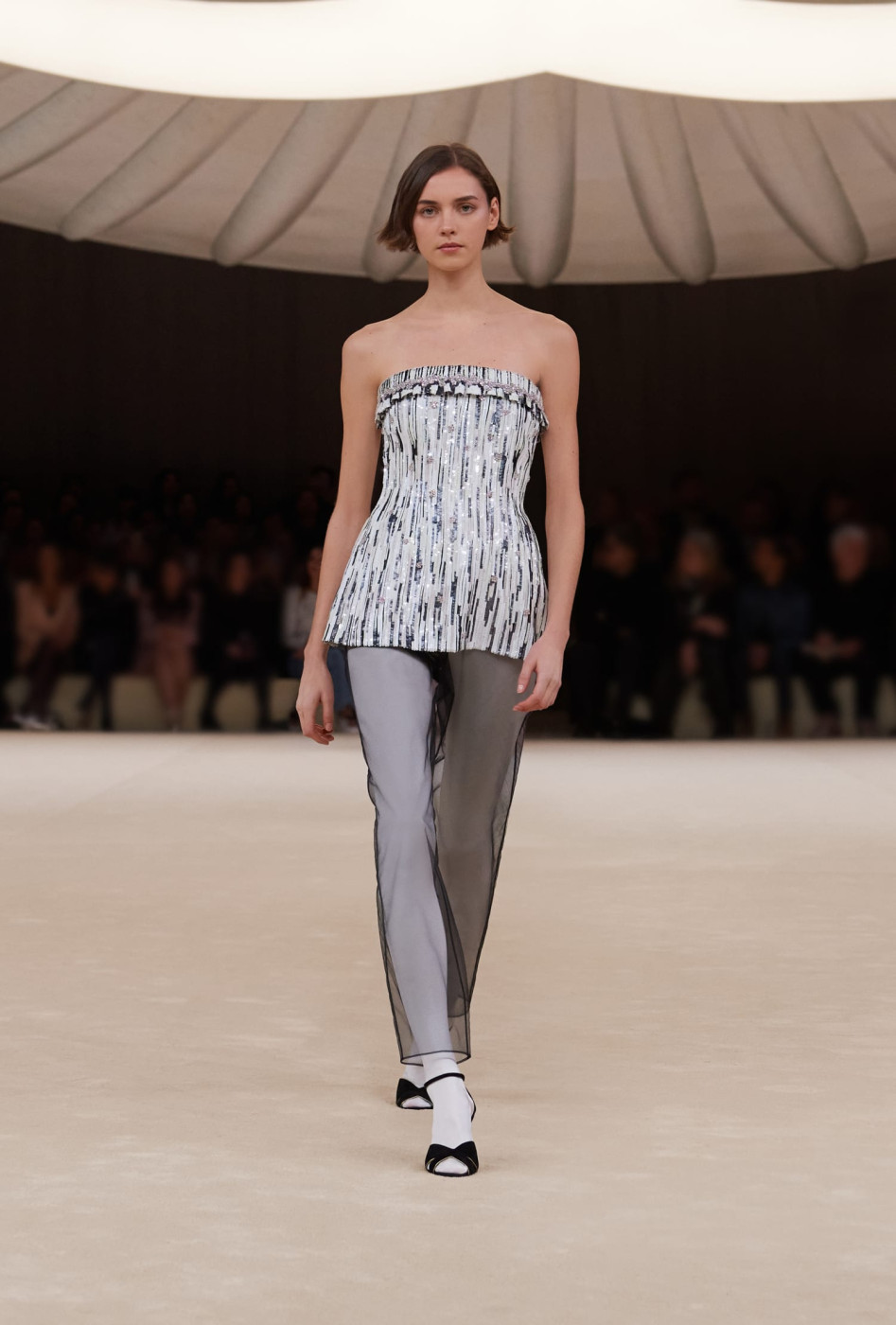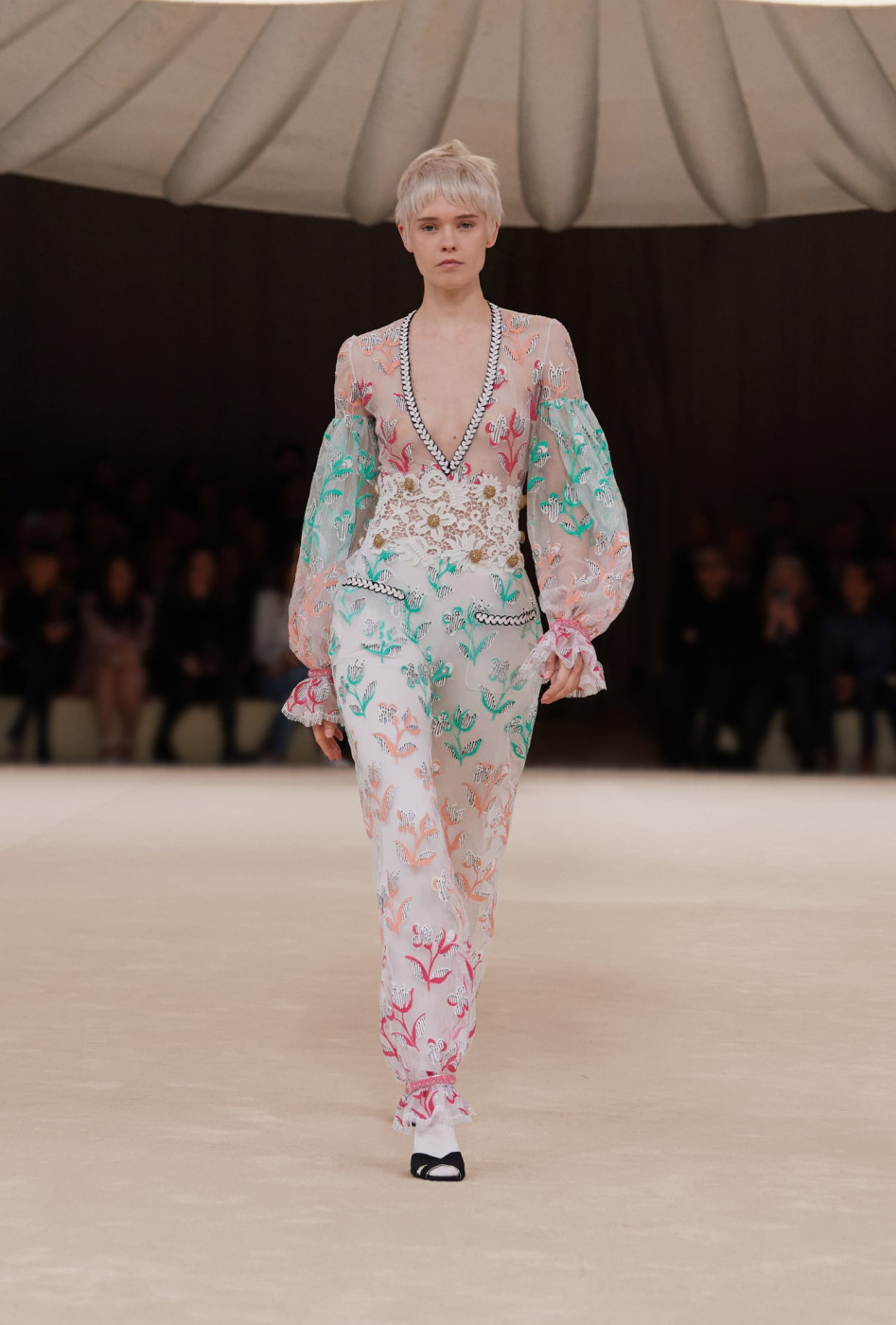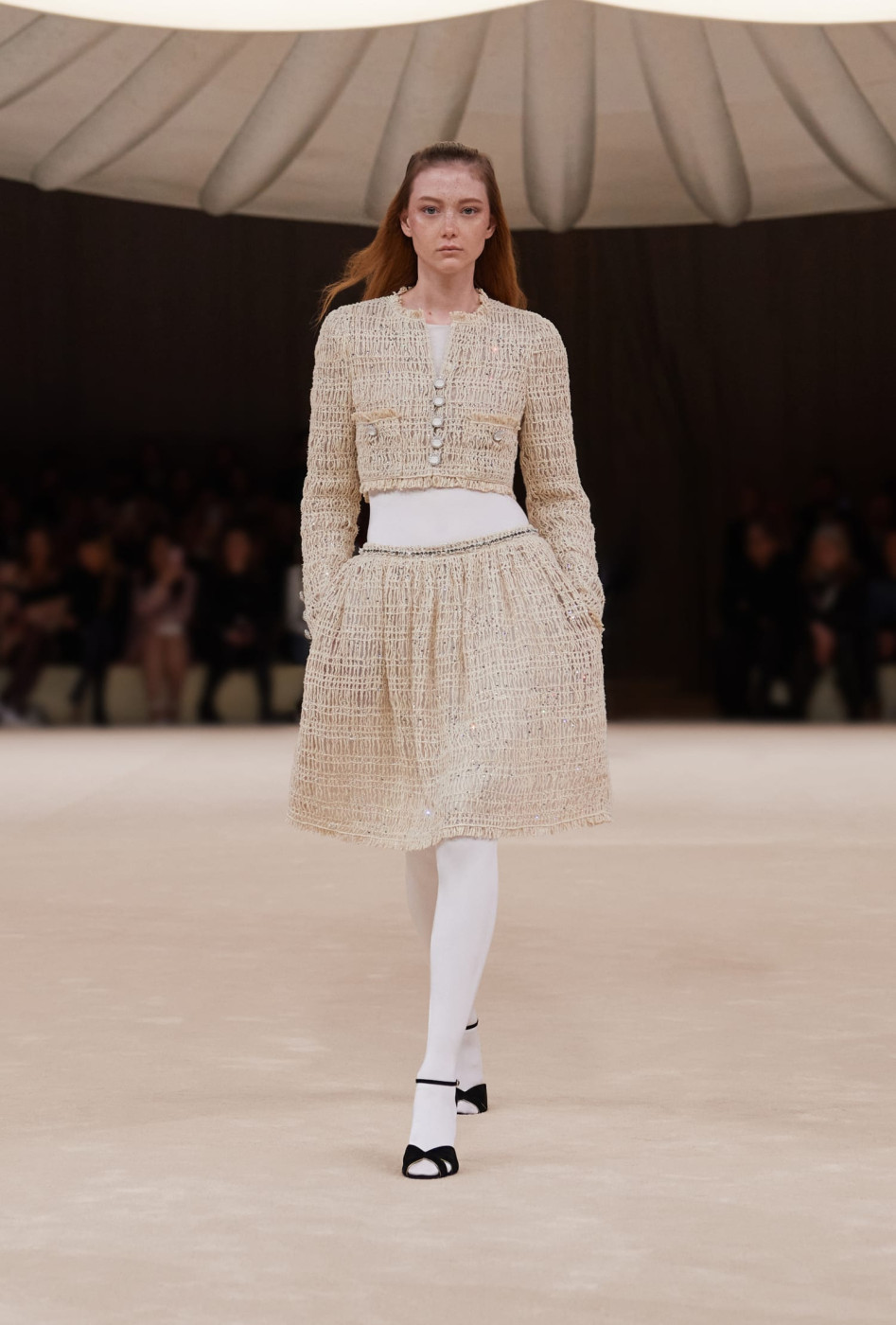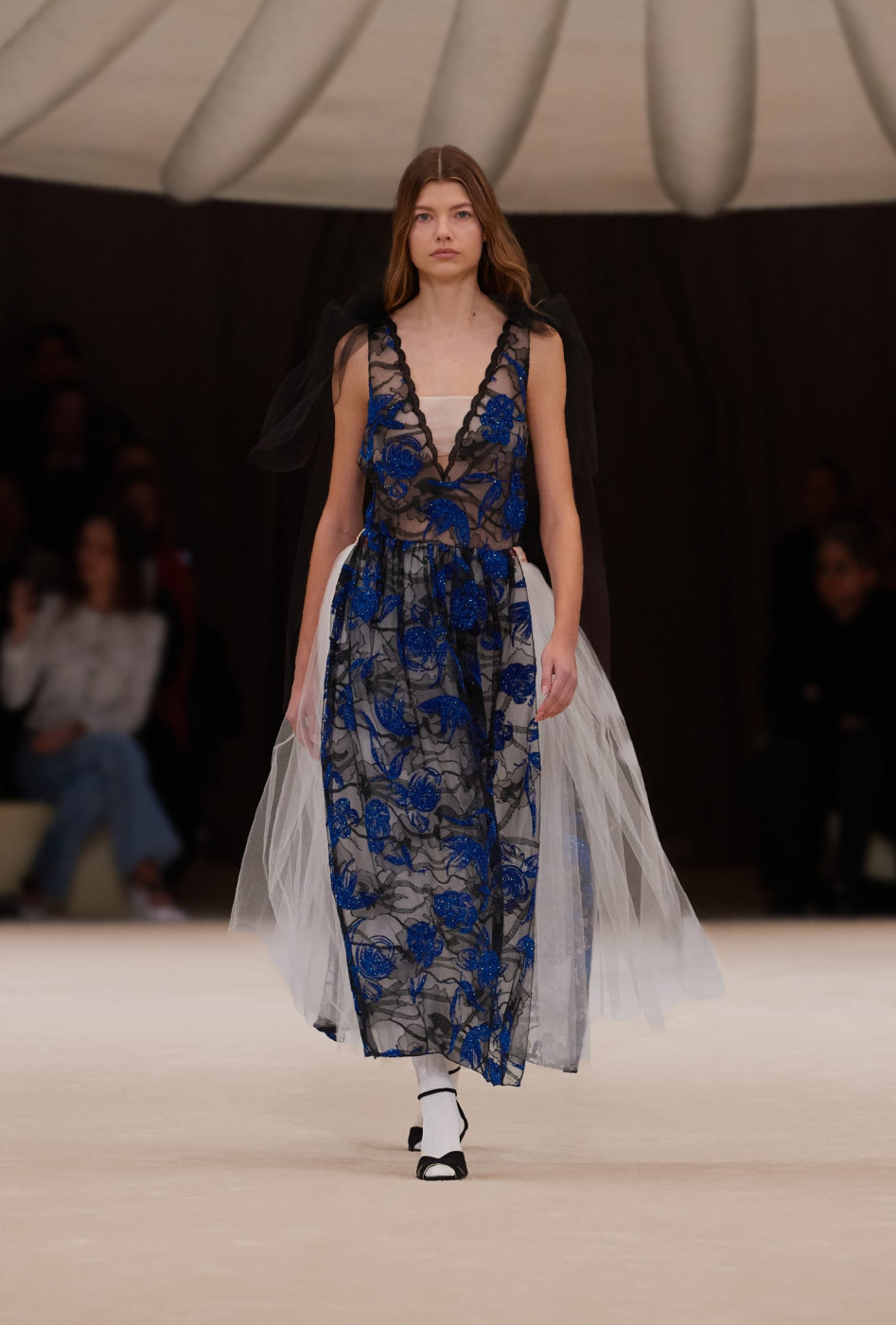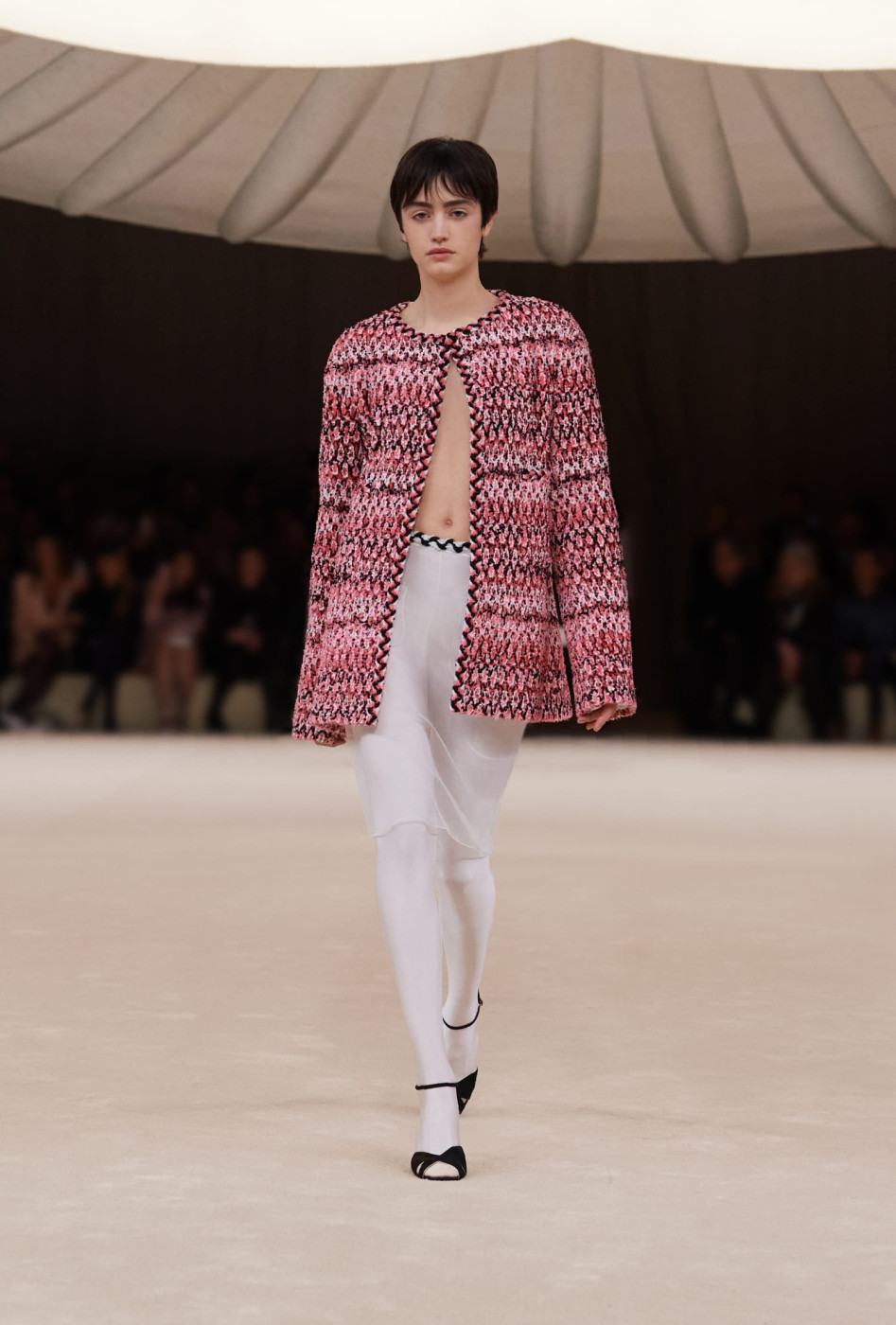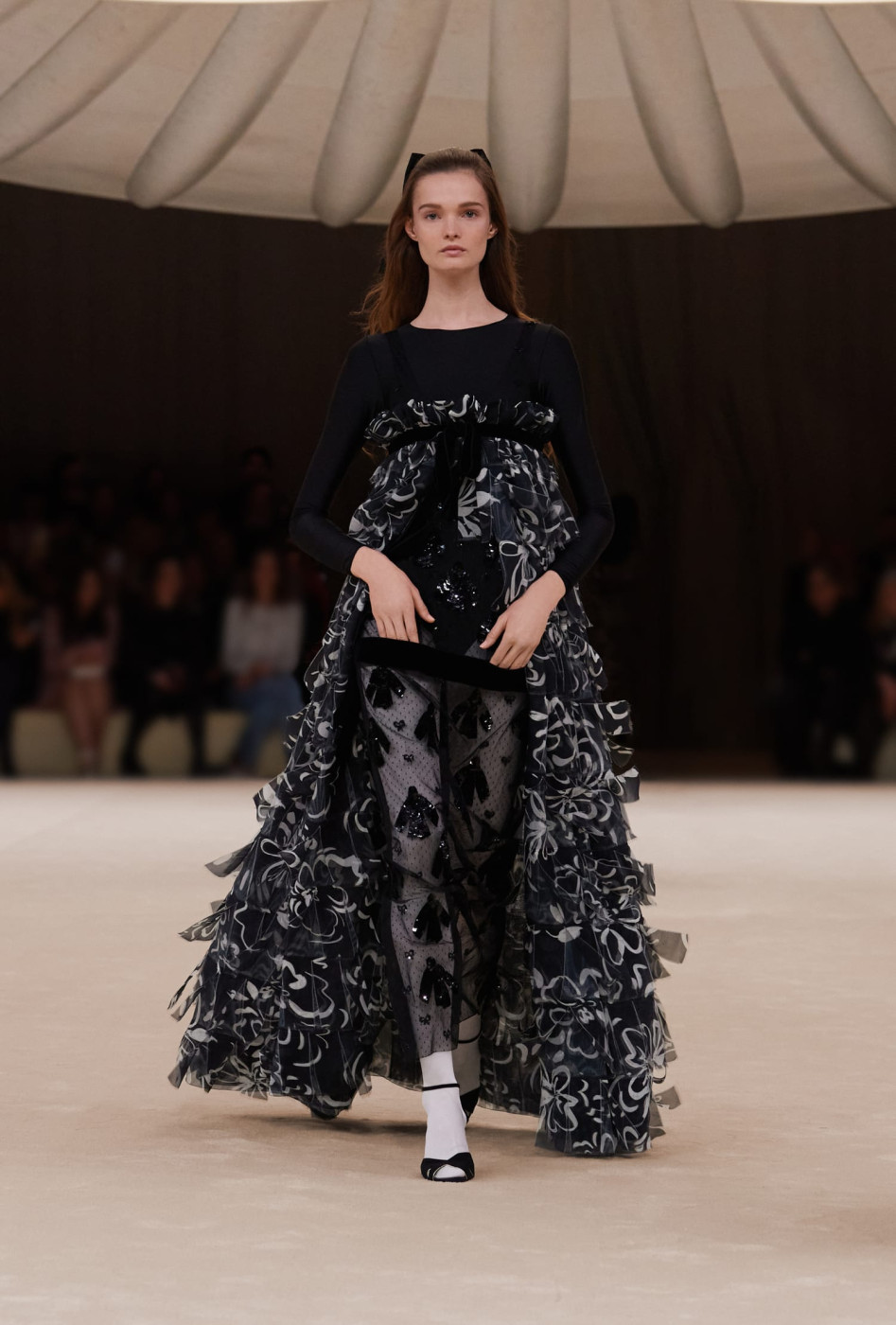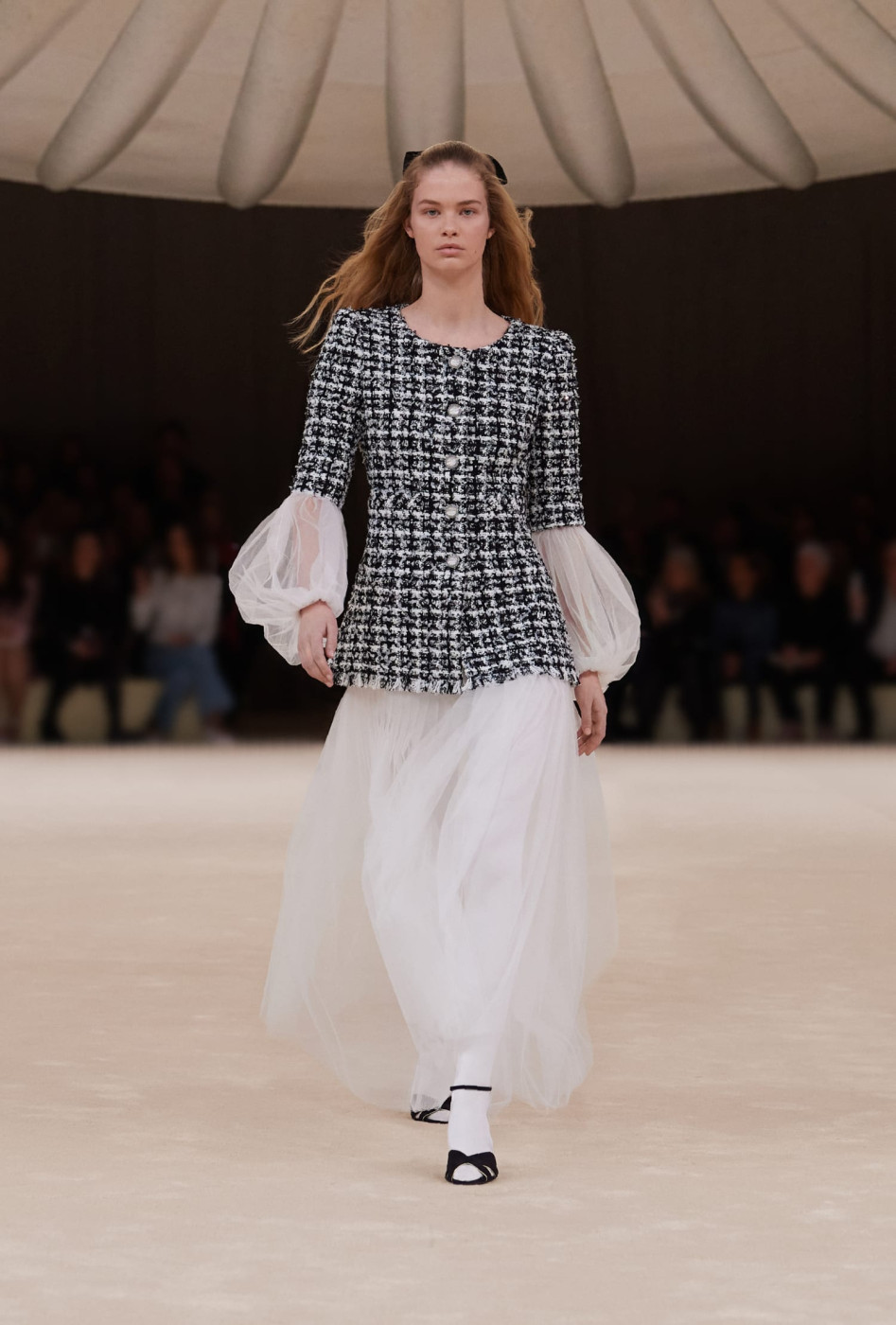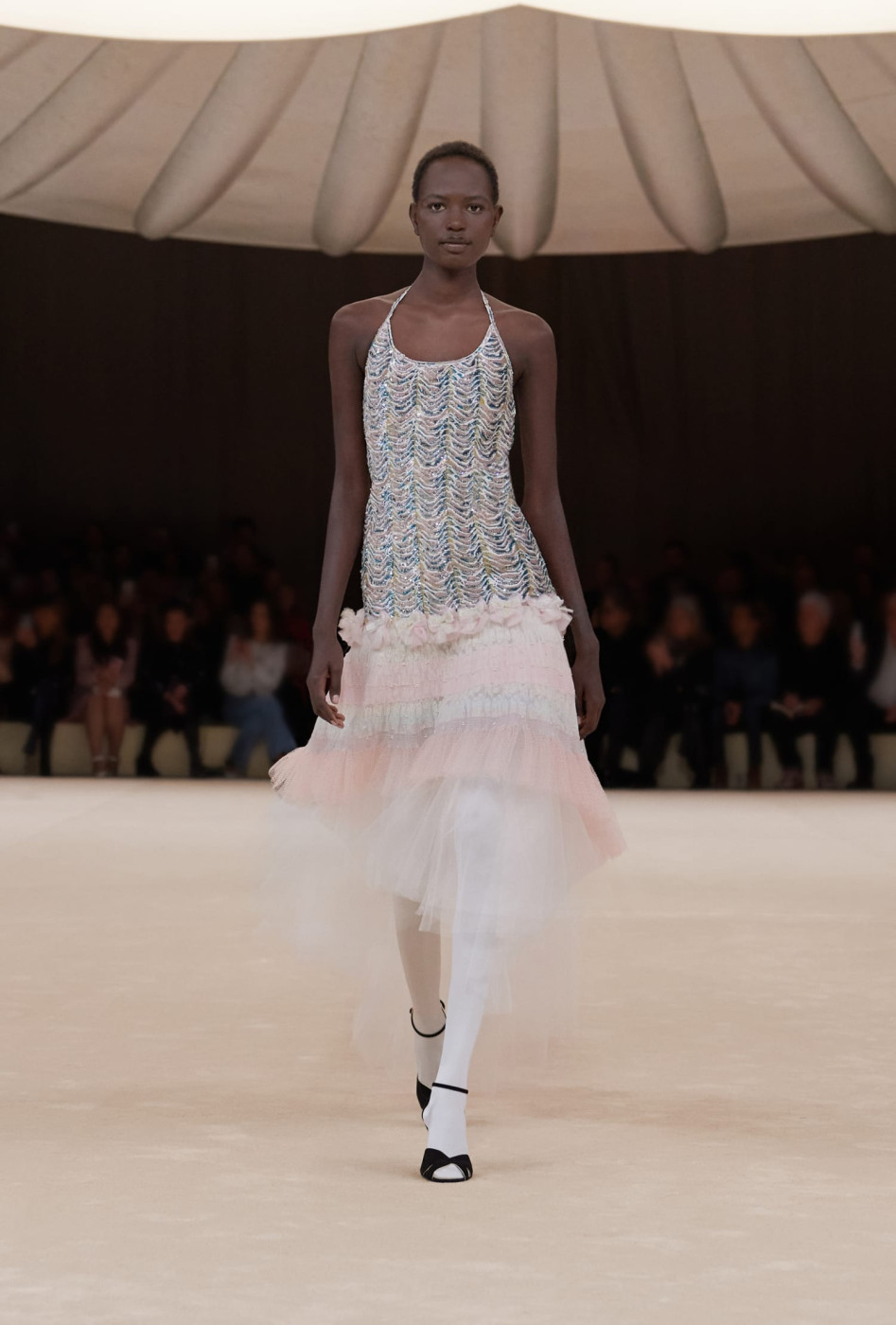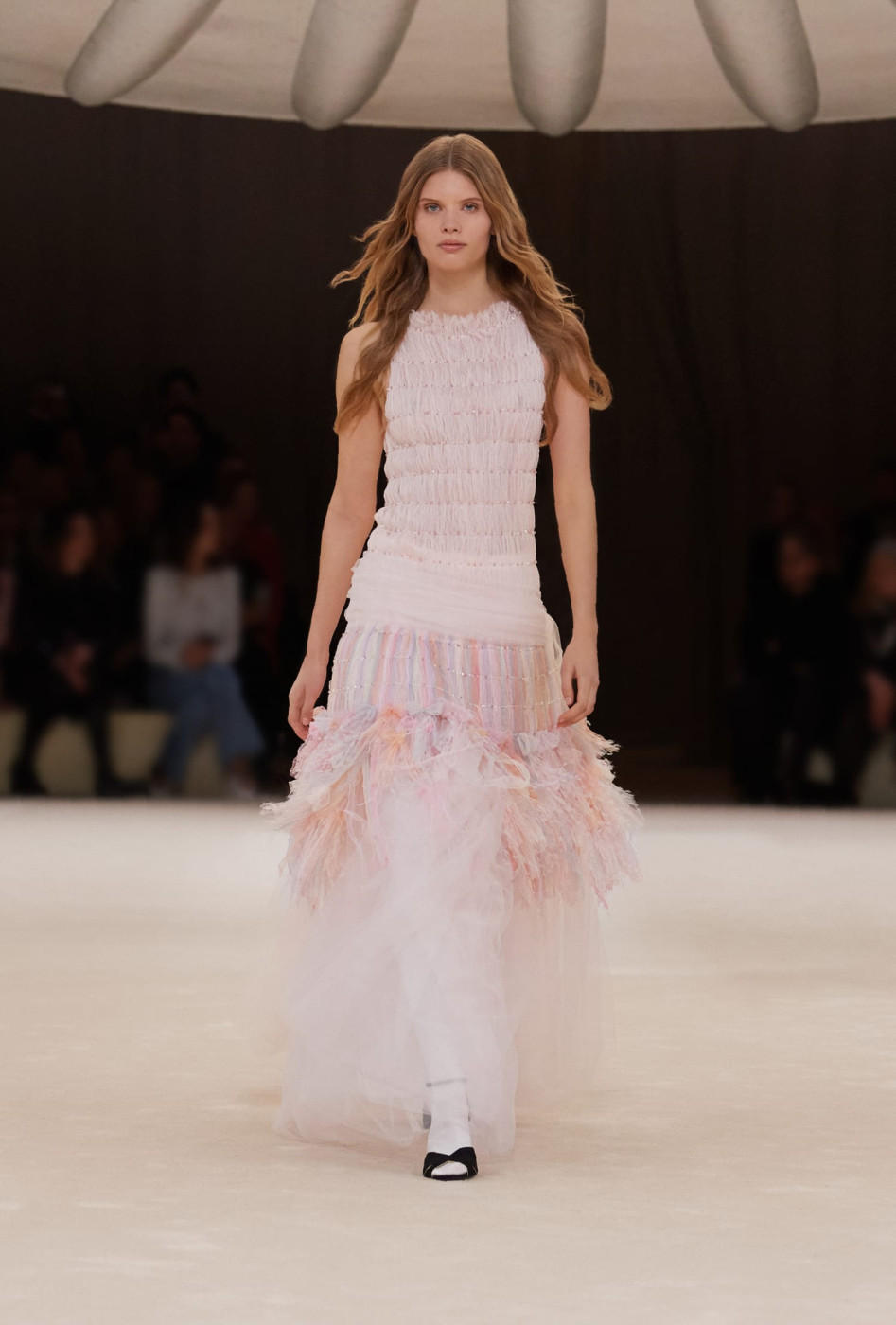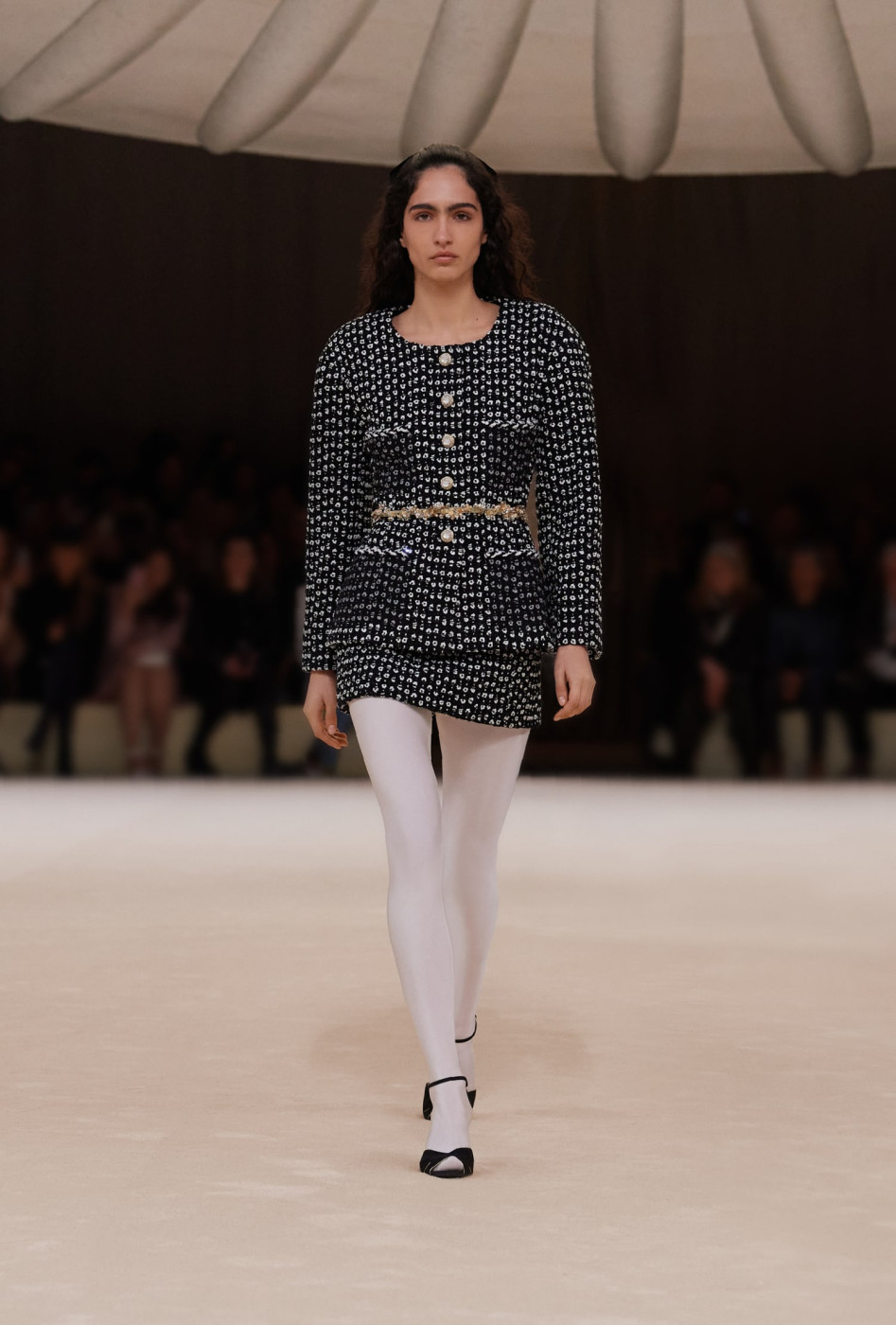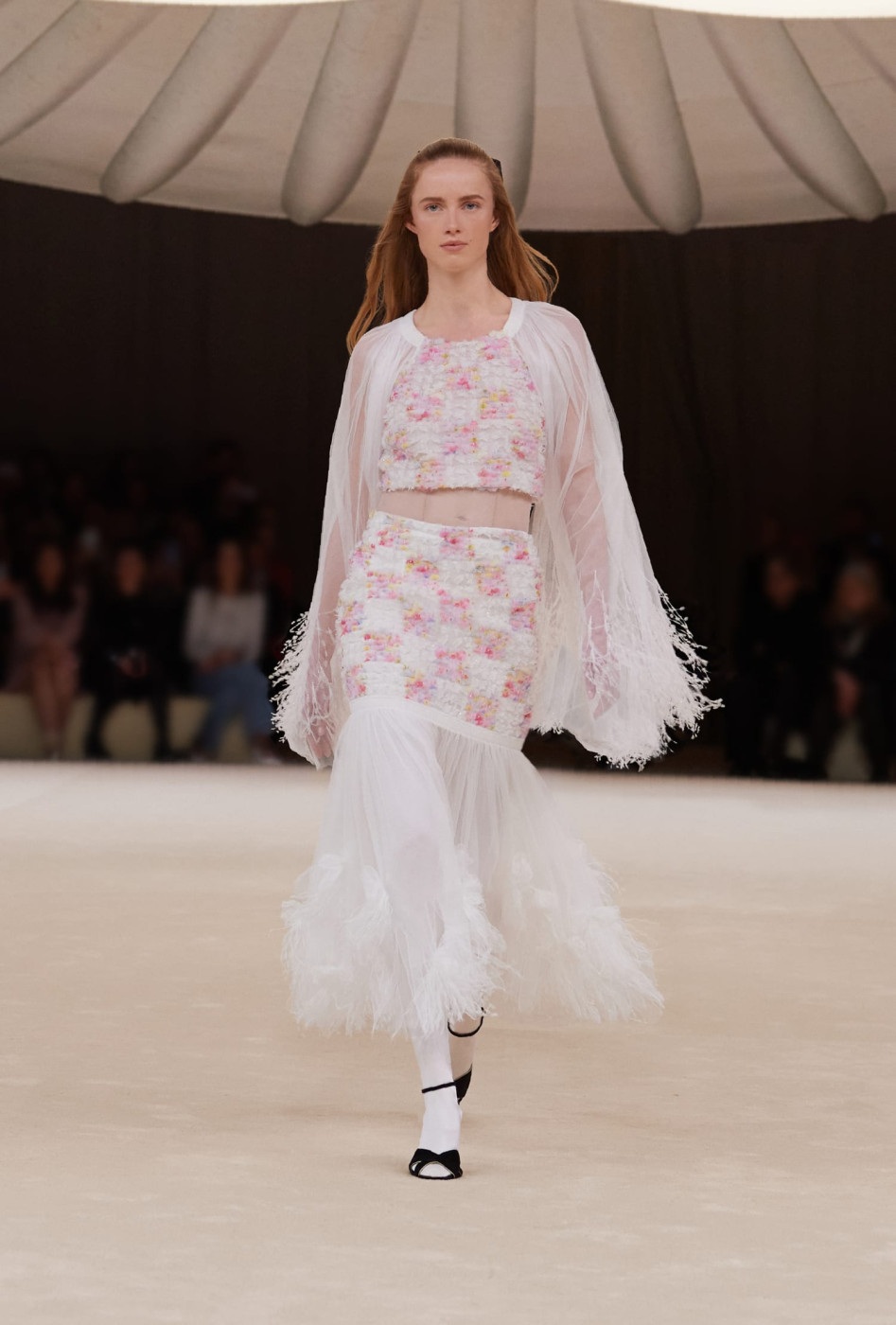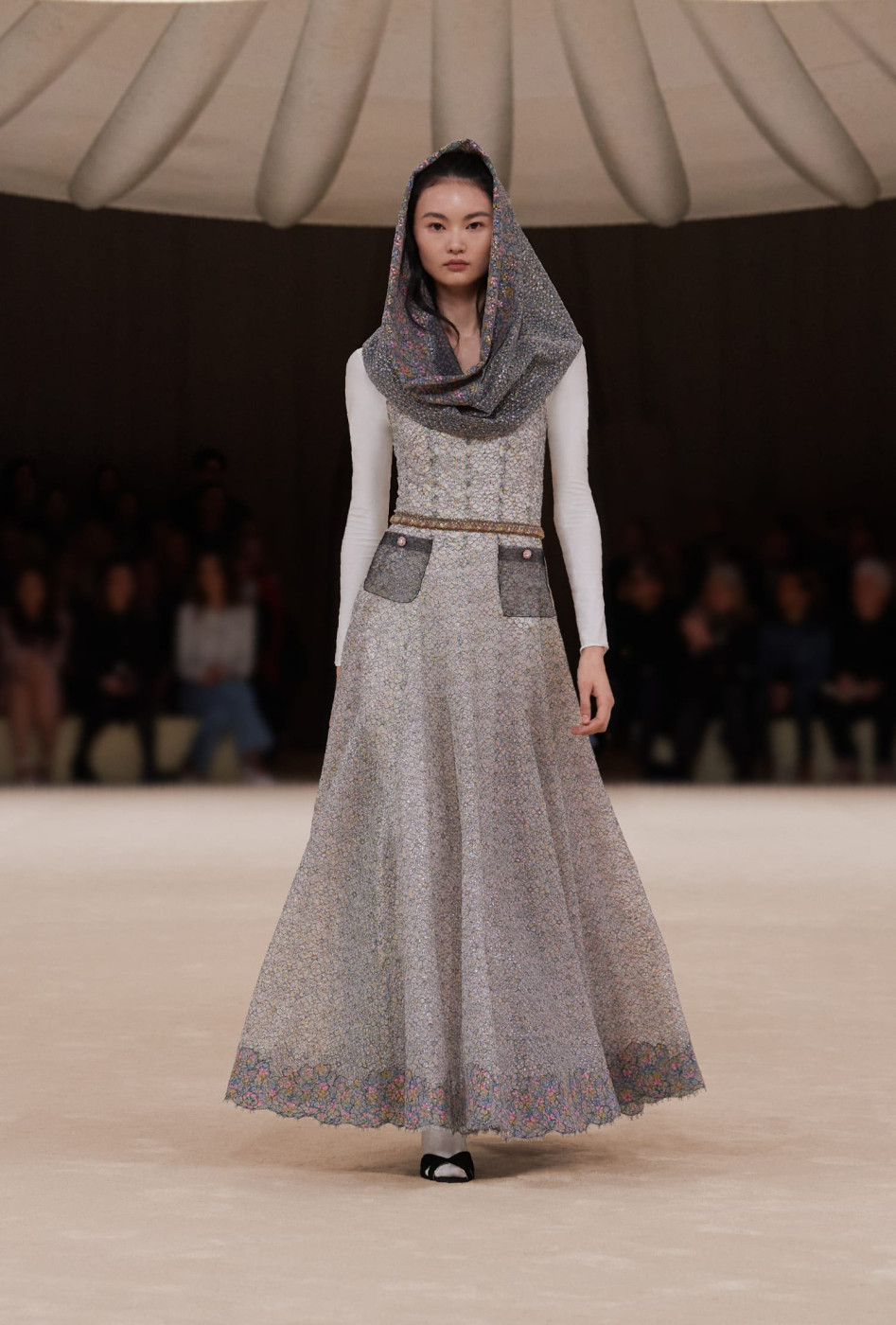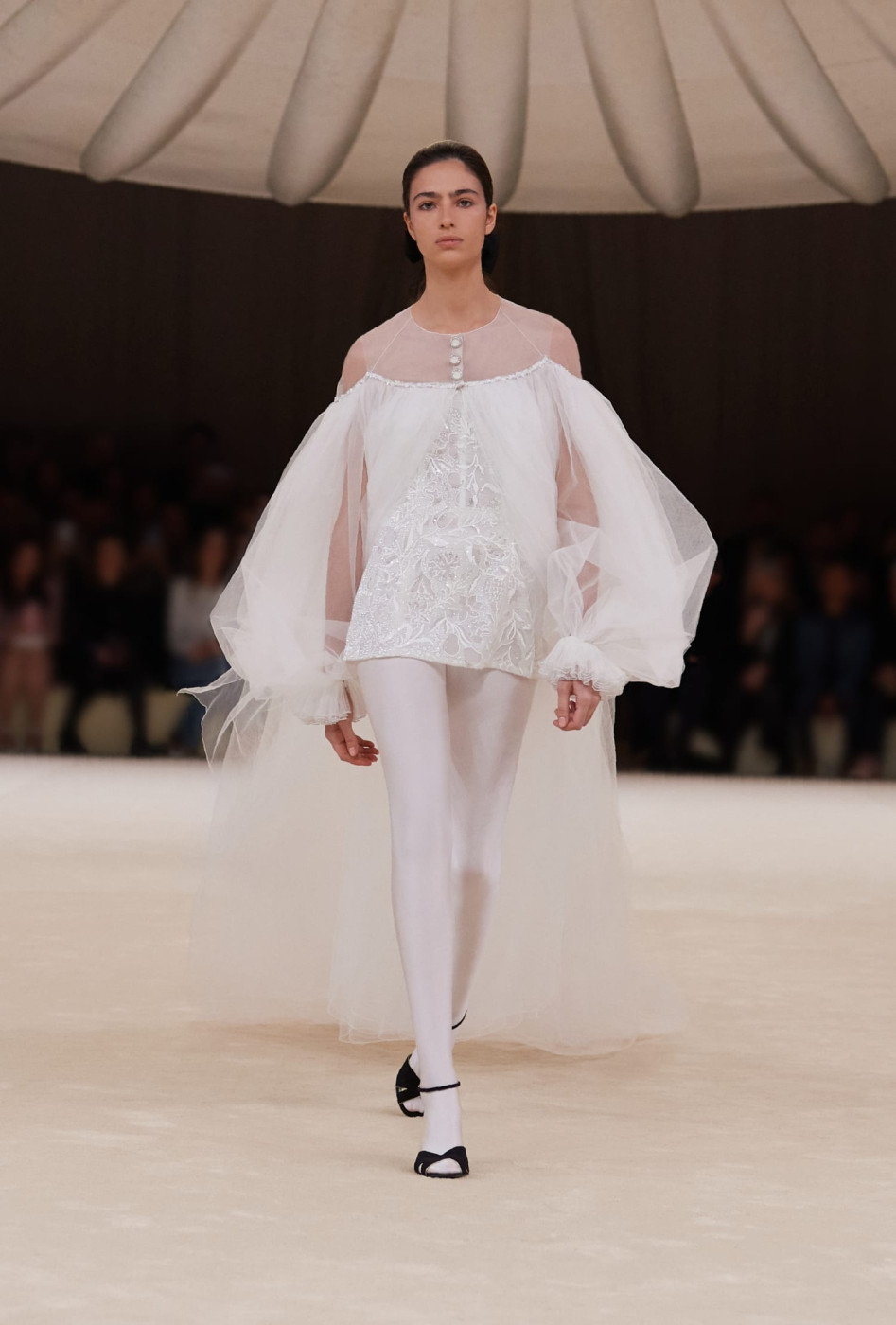
Subscribe
On The NewsSubscribe
confirmed Your subscription to our list has been confirmed.
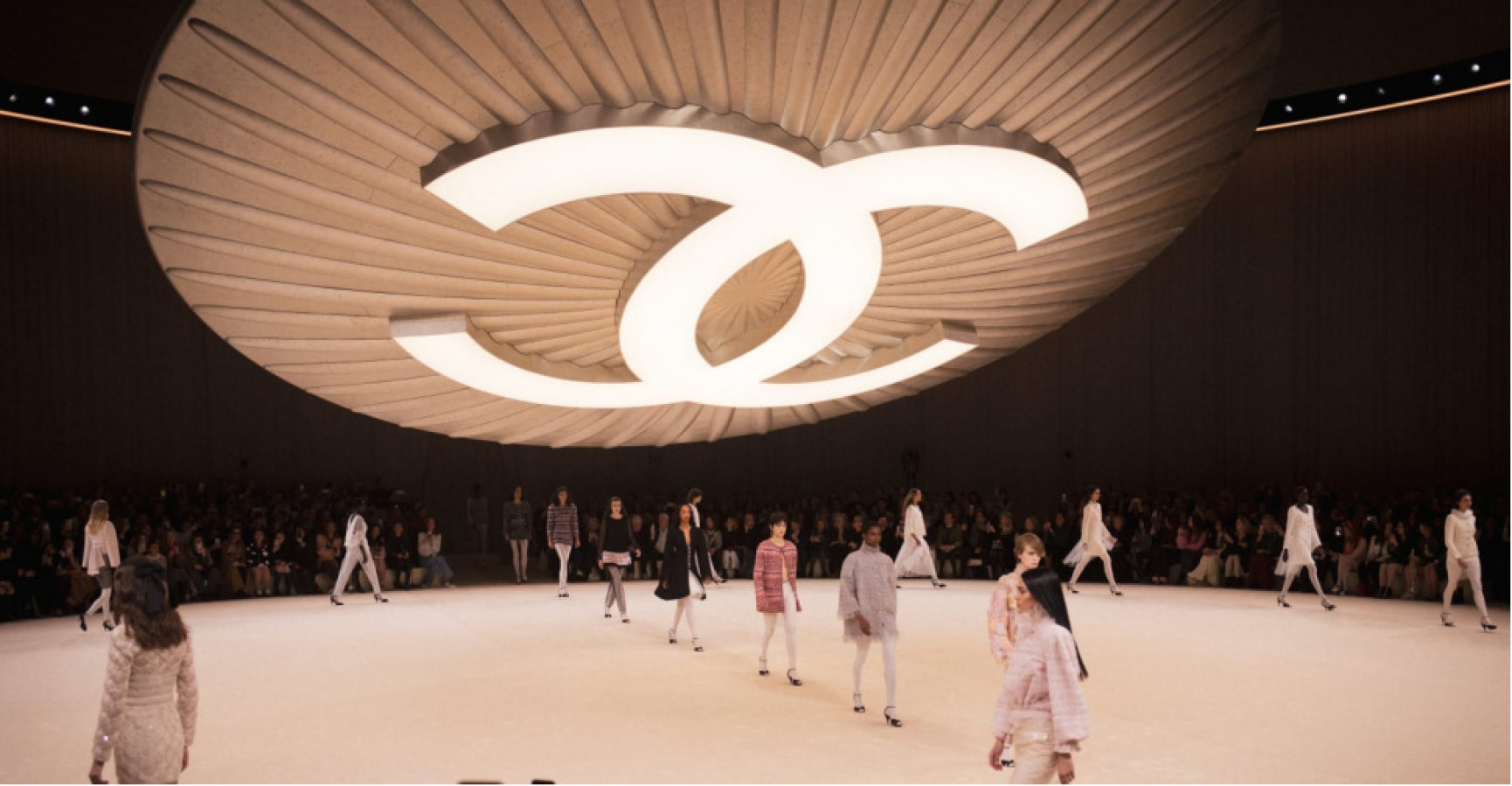
Chanel Haute Couture SS2024. Deconstructing Ballets Russes
Chanel has an incredible consistency that one can only dream of. Everything that we call DNA and heritage is collected, catalogued, boxed, labeled, and stacked in a perfect pyramid, to everyone's envy: from the bright image of Mademoiselle to the last white camellia, black ribbon, and gold button. The SS2024 couture collection called The Button was dedicated to this very detail. But despite the eponymous mini-movie serviced by pgLang, written and directed by Dave Free and scored by Kendrick Lamar as well as the défilé set with a giant button hanging under the ceiling that was designed by Kendrick Lamar, Dave Free, and Mike Carson, there is nothing about the buttons in the collection itself. The actual inspiration is Ballets Russes and, as artistic director Virginie Viard tells us, the collection is dedicated to the centennial anniversary of the beginning of Chanel's collaboration with Diaghilev.

And since we've been given this key, we can't help but try and play with it. This key easily opens the main door to this very bright spring collection, in which the ballet uniforms are clearly visible — in the form of the leggings and leotards underneath all the clothes. Here is a dress that looks like a white-pink-and-golden plumage — whose is it? Which of Diaghilev’s characters would it be suitable for? L'Oiseau de feu? — Yes, probably L'oiseau de feu, but in a more light version from Virginie Viard, and not in a sizzling one from Léon Bakst. And in the final look of a joyful and very contemporary bride — Virginie Viard always succeeds with those — in a white mini with puffy tulle sleeves and a long cape train behind her back, Watteau&Rococo suddenly appears, just as in the opening look presented by Margaret Qualley we see the white puffy collar of his Pierrot. Or is it something from Ballets Russes again? Pétrouchka by Alexandre Benois, for example? This fascinating game can be continued, especially since Virginie Viard herself recalls Bakst and his palette, and also emphasises the historical connection between Chanel and ballet, reminding us that Chanel supports the Paris Opera Ballet to this day. But in general, the ballet context is not emphasized here in any way — this is a tender, elegant and, importantly, an easily stylised collection which has a lot of spectacular, but nothing theatrical.
These clothes were, of course, a celebration of métiers d'art that no Chanel collection can forego — tulle, ruffles, pleats and lace, embroideries depicting draperies, mousseline plumes, bows and flowers, illusion tulle pockets, sequins. None of them made these looks bulkier, giving them a sense of airiness instead. But, going back to the starting point of the ballet, the first image that came to mind, as soon as I saw the very first looks with transparent skirts and jumpsuits, was neither Diaghilev nor Bakst, but Margiela with his transparent protection cover that he liked to put on top of a variety of looks. It seems that Virginie Viard has decided to continue the deconstruction exercise that she began in the prêt-à-porter SS24 collection with the various clothing items cut up and sewn with each other. But in the haute couture version, it’s done with delicacy and precision, which only made this collection more impressive.
Text: Elena Stafyeva
Copyright CHANEL

